Below are the updated season forecasts using data from games through May 7, 2017.
Power Rankings
The “Power Rankings” we concoct are the “strength” of the team according to its competitive expectations. They are computed by forecasting the expected points (3 x win probability + 1 x draw probability) against every MLS team, both home and away, and taking the average per team.
SEBA and MLSSoccer have the Union improving to 20th from 22nd. ESPN has the Union improving to 19th from 21st. Soccer America has Philadelphia up to 19th from 20th.

The following shows the evolution of SEBA’s power rankings for the MLS Eastern Conference over time.
Playoffs probability and more
Philadelphia’s playoffs odds have increased from 7.1% to 12.5%.
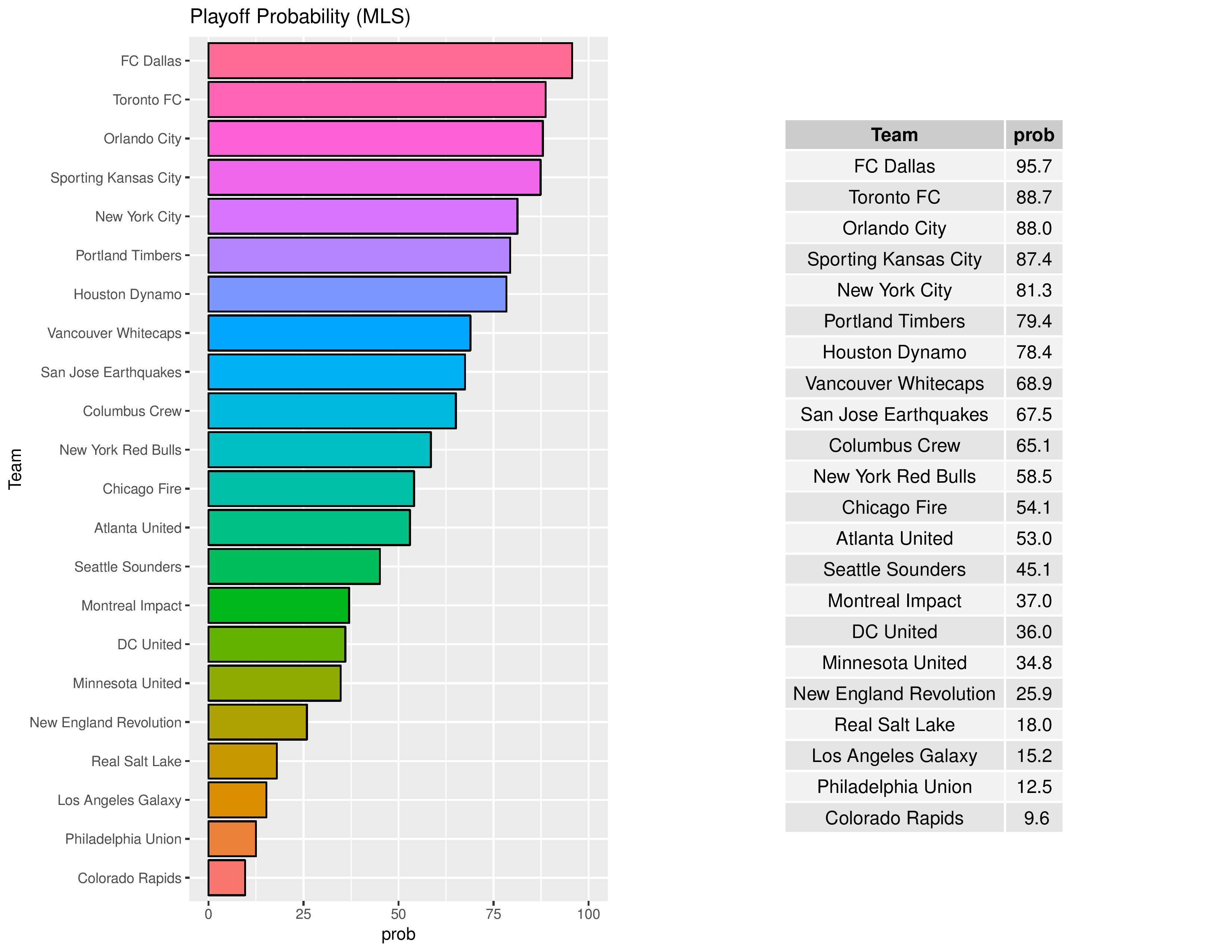
The following shows the simulation distribution for the points earned by the 6th-place MLS East club, joined with the simulation distribution of points that Philadelphia is expected to earn.
Tiebreakers aside, the overlap is where the Union are likely to make the playoffs.
The most common number of points required to make the playoffs in the 6th slot is 47. The most common number of points simulated for the Union are 38.
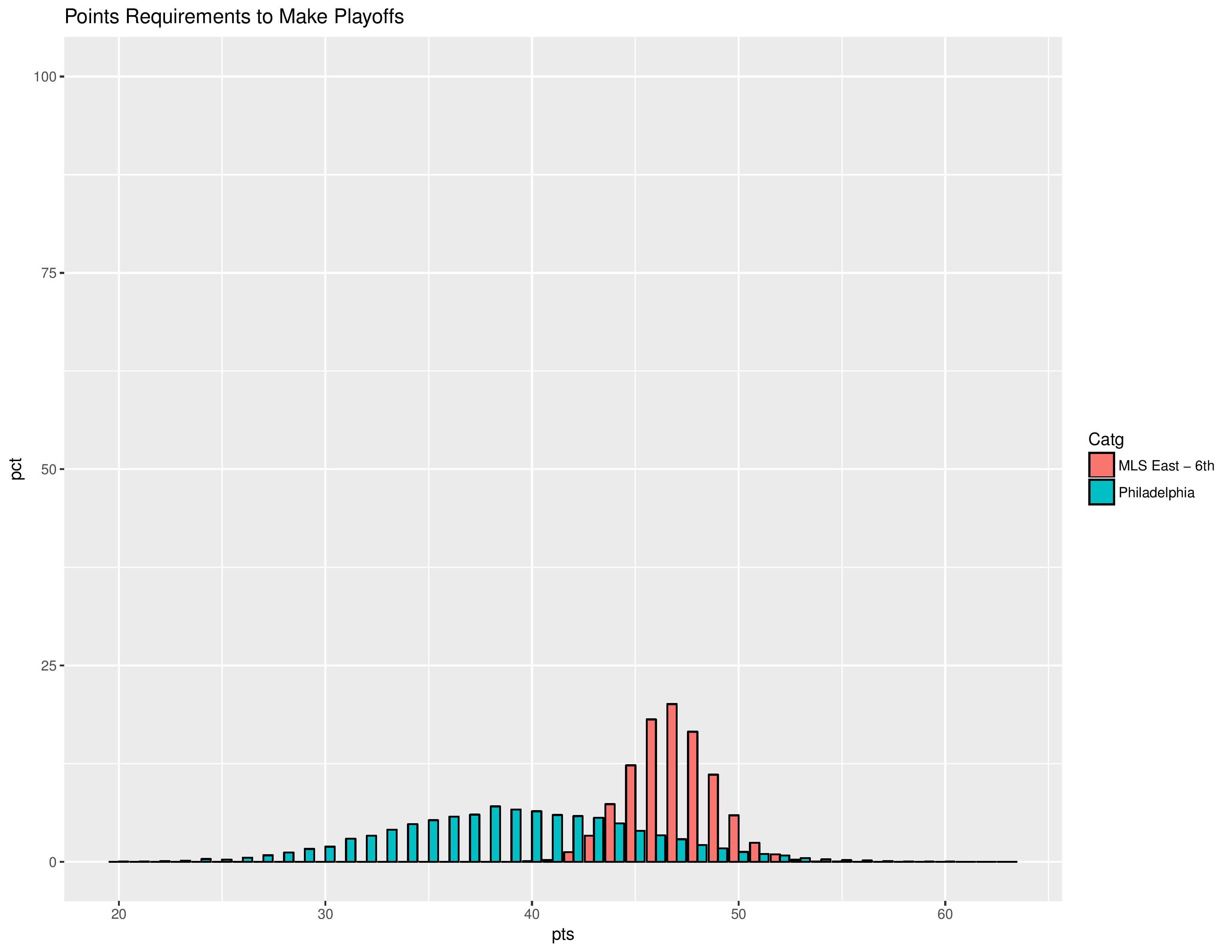
Philadelphia’s odds to win the Supporters’ Shield remain at practically 0%.
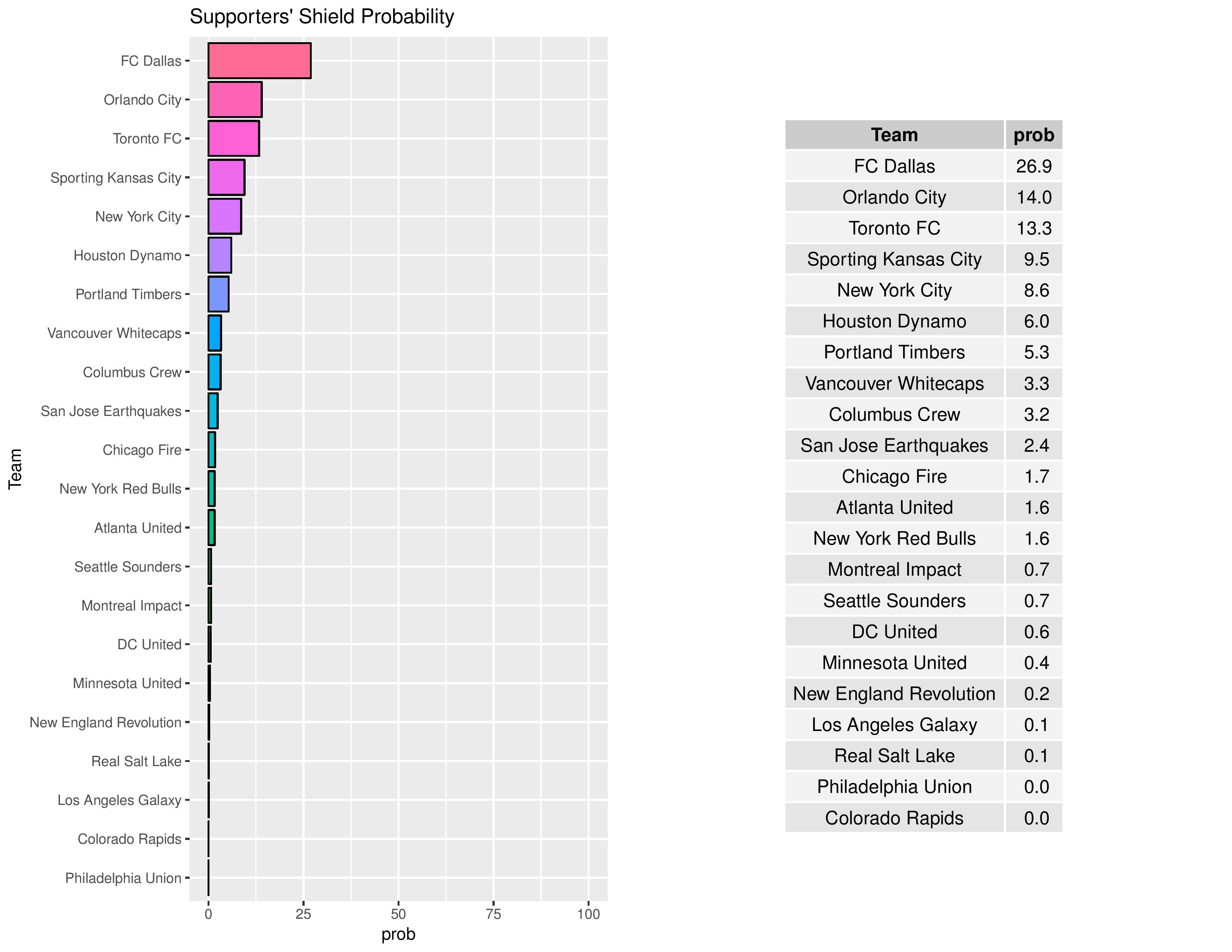
In part, clubs that score a lot of goals are given an advantage in MLS Cup due to the 2-leg aggregate goal format of the conference semi-finals and conference finals. This gives those clubs a better chance at banking large victories which carry over.
The Union’s chances of winning the MLS Cup increase to 0.5% from 0.2%.

In the U.S. Open Cup, poor teams with a higher propensity to tie gives them an advantage, as they are more likely to reach penalty kicks which are a complete toss-up. Conversely, good teams with a higher propensity to tie gives them a disadvantage for the same reason.
Philadelphia’s odds of winning the U.S. Open Cup have increased from 2.8% to 3.1%.

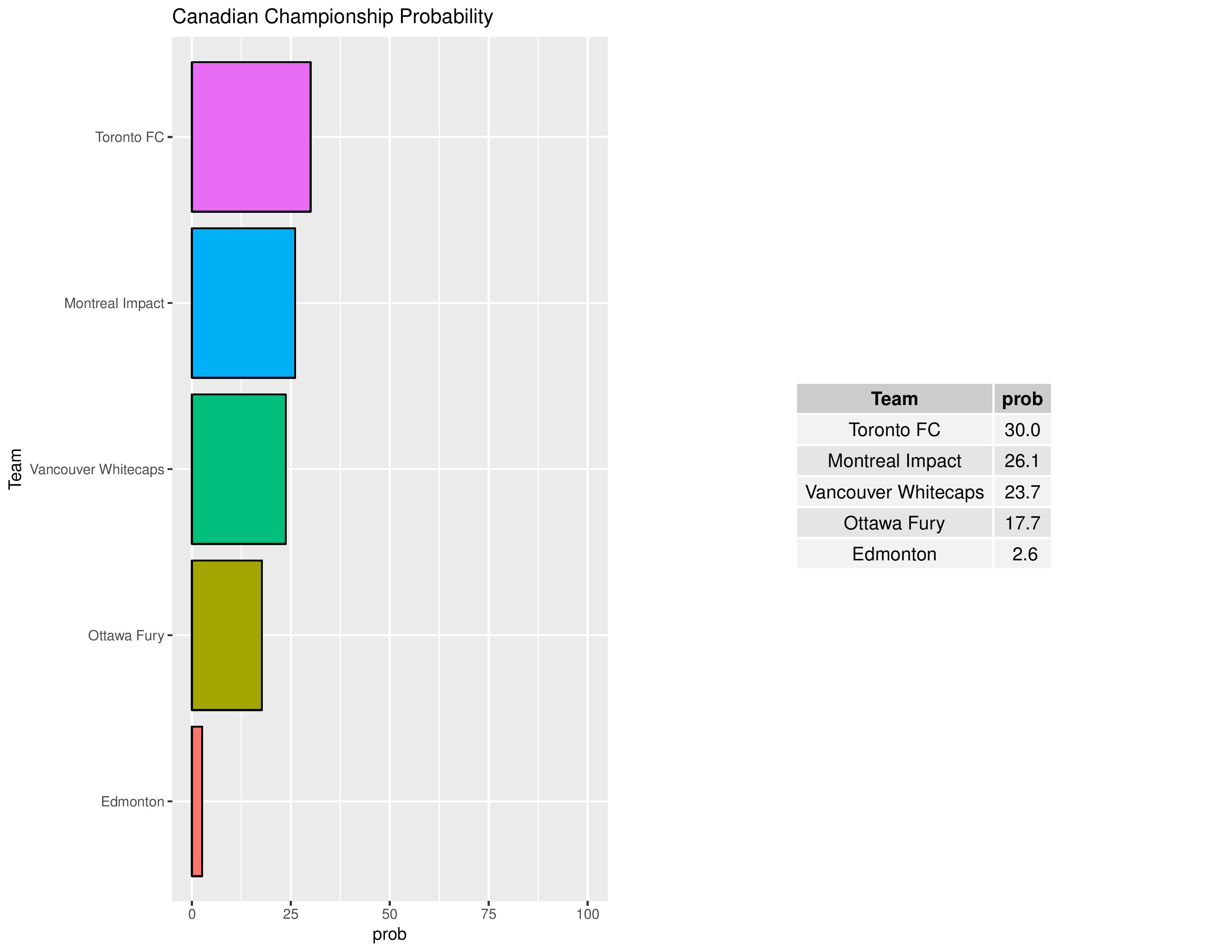
The chances of Canadian teams qualifying for the 2018 CCL are as follows (USA teams remain set as qualified last year).

Philadelphia’s chances for qualifying in 2017 for the 2019 edition of the CONCACAF Champions League have increased from 3.0% to 3.6%.

Over time, we can see how Philadelphia’s odds for different prizes have changed.

The following are probabilities for each category of outcomes for Philadelphia:
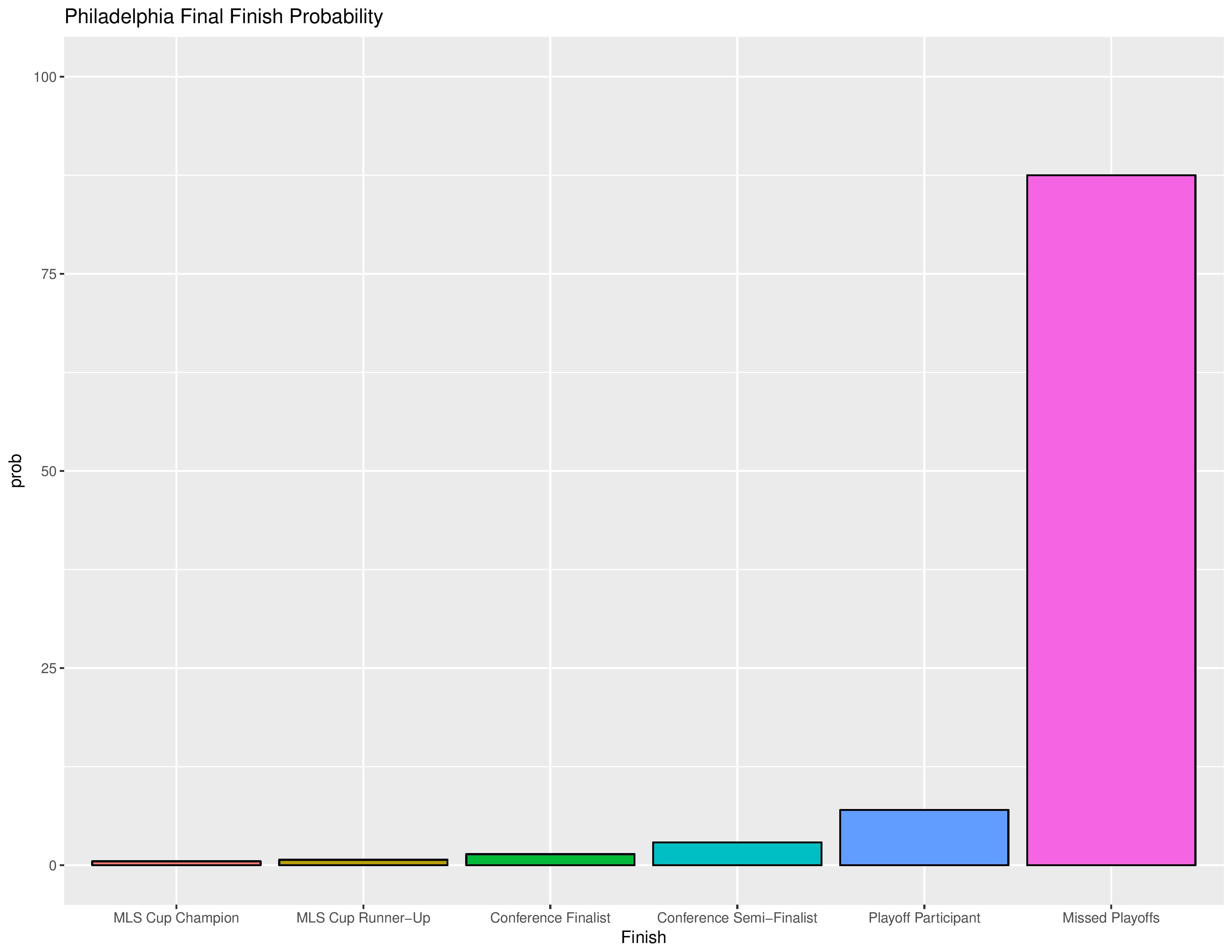
The following shows the probability of each post-playoff ranking finish:

The following shows the summary of the simulations in an easy table format.


Next we show how the Remaining Strength of Schedule affects each team.
The “Points Percentage Advantage” shown on the X-axis represents the percentage of points expected over the league average schedule. This “points expected” value is generated by simulating how all teams would perform with all remaining schedules (and therefore judges a schedule based upon how all teams would perform in that scenario).
In short, the higher the value, the easier the remaining schedule.
Remaining home field advantage will be important here. It might also be true that a better team has an ‘easier’ schedule simply because they do not have to play themselves. Likewise, a bad team may have a ‘harder’ schedule because they also do not play themselves.
The table following the chart also shares helpful context with these percentages.
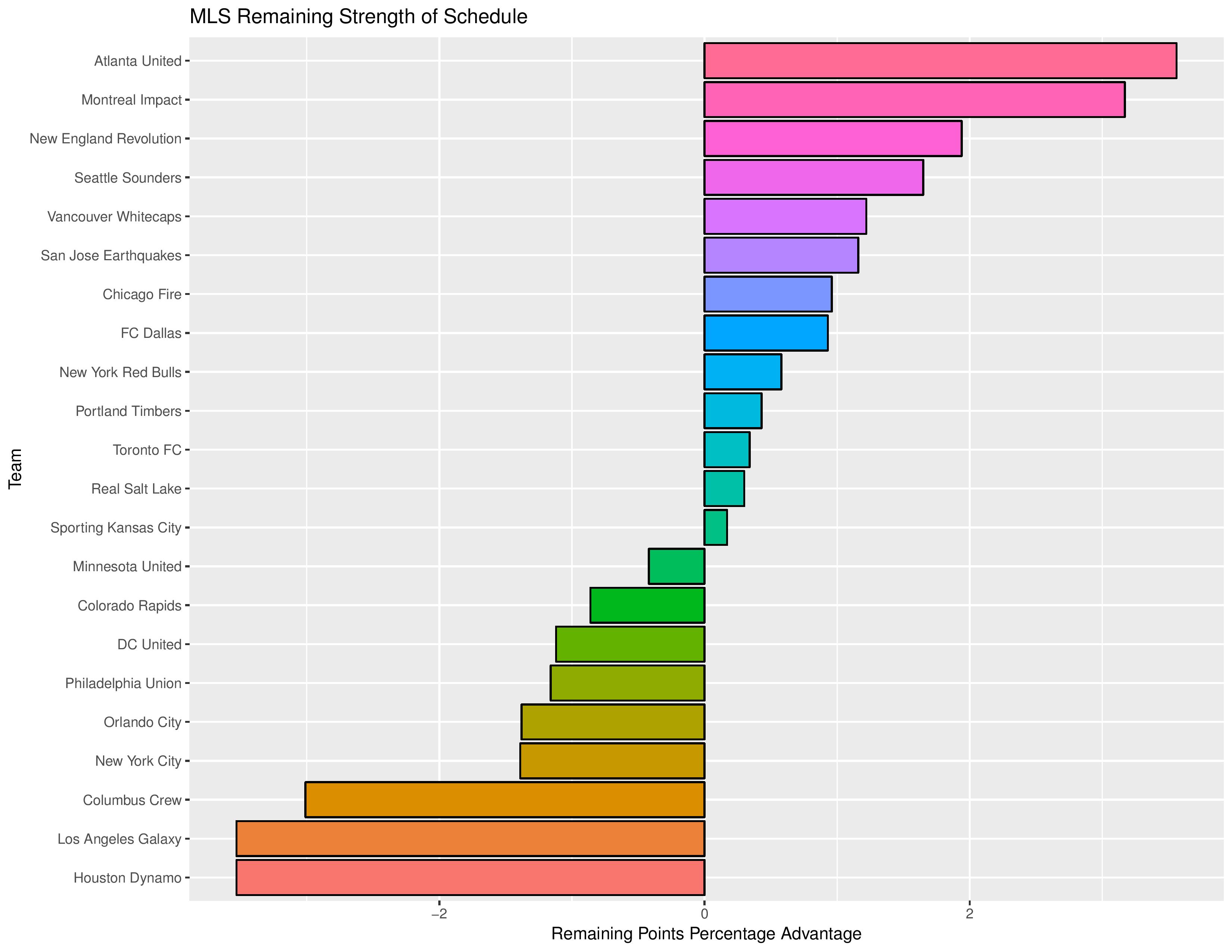
Accompanying the advantage percentage in the following table is their current standings rank (right now ties are not properly calculated beyond pts/gd/gf; I may fix that, but maybe not for a while), the remaining home matches, the remaining away matches, the current average points-per-game of future opponents (results-based, not model-based), and the average power ranking of future opponents according to SEBA.
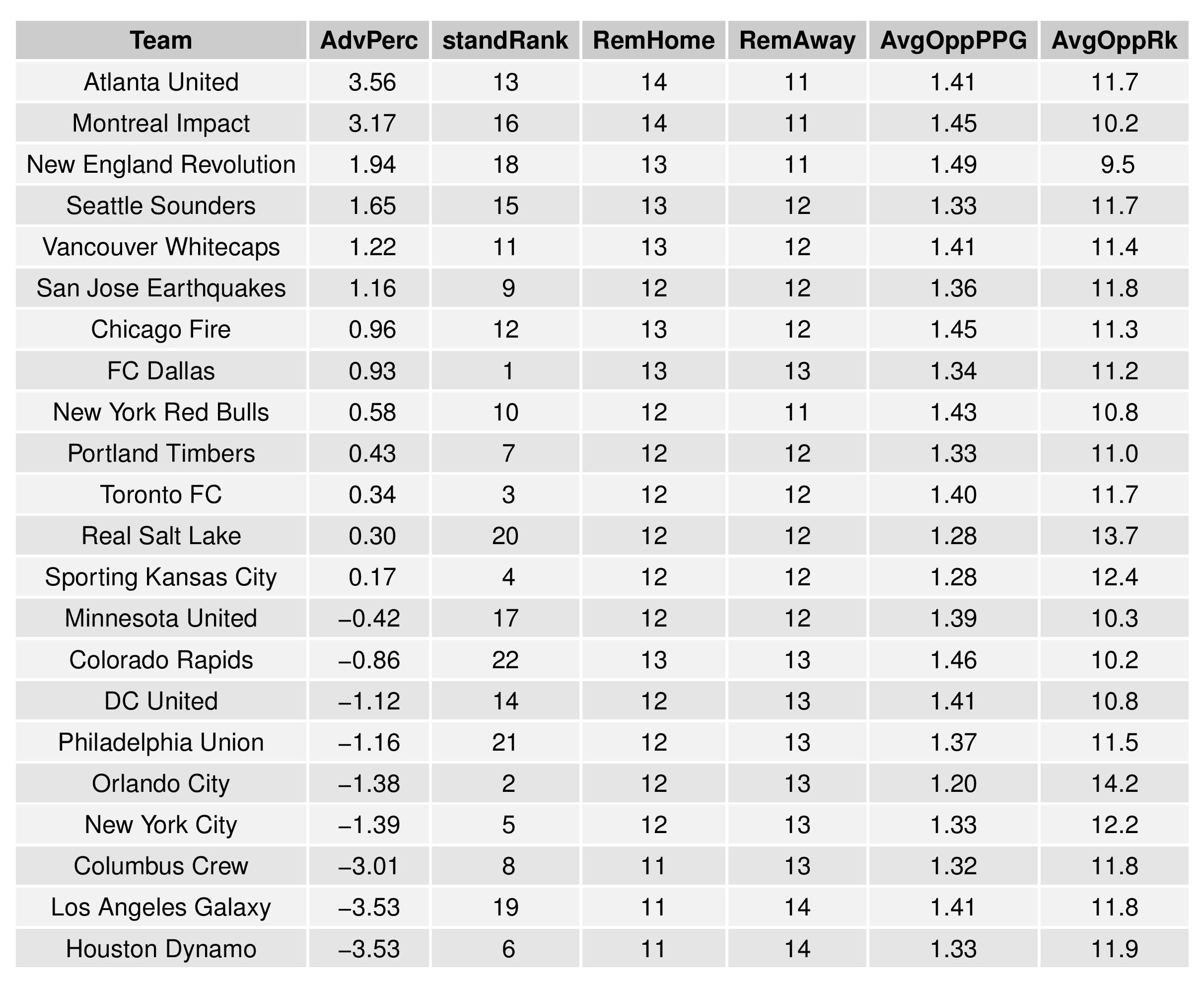
The following shows the expectations for upcoming Philadelphia matches:
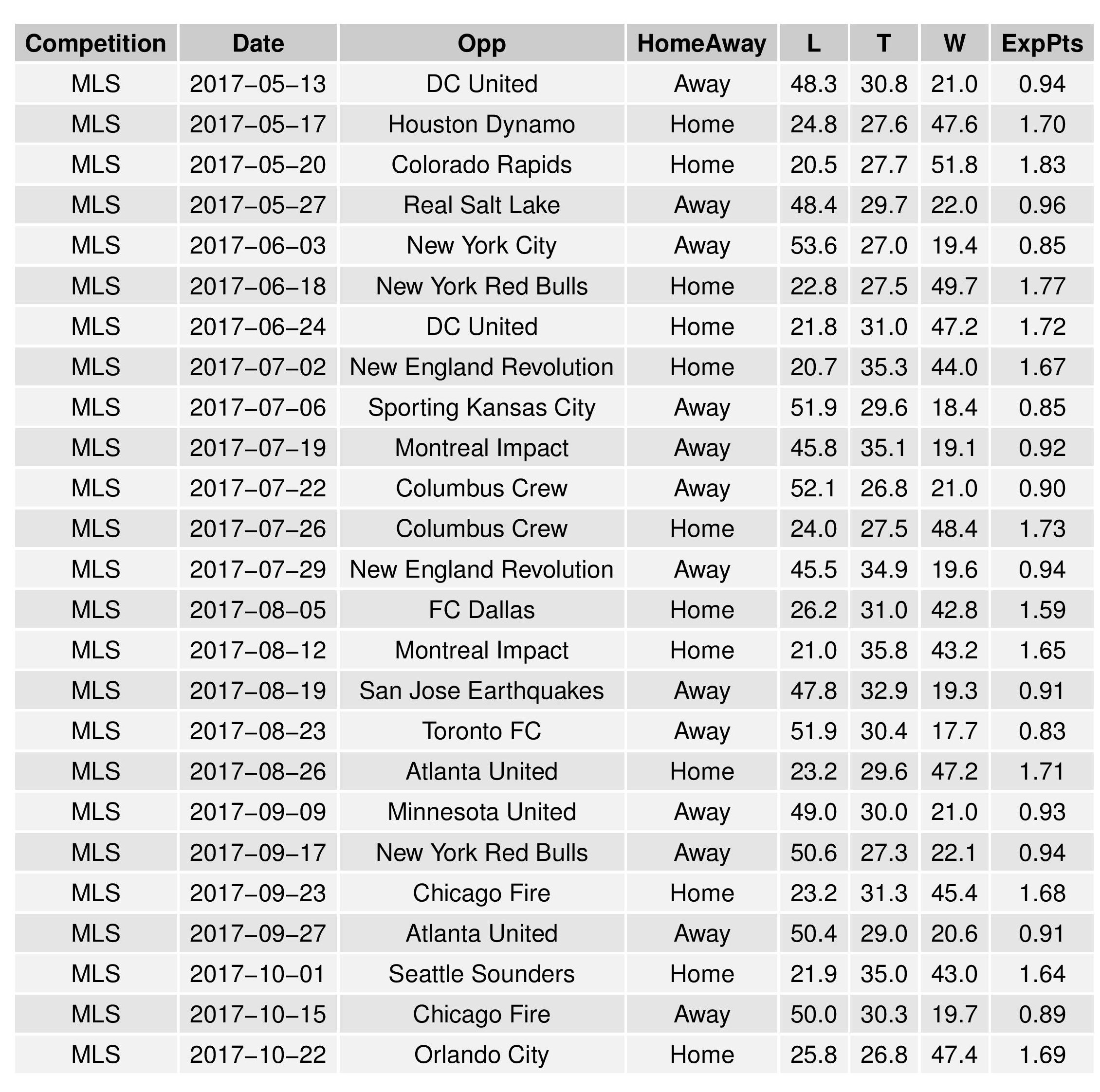
Last Game Probability Chart
The following is an new addition in beta-testing. I’ve built a new model, totally distinct from the model governing the SEBA system (which is everything else in this article), which estimates the probabilities of goals occurring at different times during a match and how that results in changing win/tie/loss probabilities.
This is actually, currently set up in a very different fashion than it will be, using only Team and Home/Away variables, whereas I intend to include Player and Team stats as much as possible (and probably eliminate the ‘Team’ variable itself when Players are involved) with as much time-specific-data as I can gather (which isn’t much).
Although it would be better to wait to publish until the work is closer to as I intend it to be, I really didn’t want to unveil this new feature from a depressing match. I mean… look how the happy green line jumps up the page.
For the following, the green line represents the odds of a win, the blue line the odds of a tie, and the red line the odds of a loss.

Eventually I will also back-run all of the old matches, depressing as they may be.
Model Validation
The following shows the degree of error by the model vs the error if the model was purely random without intelligence. The x-axis is based on the date from which the forecast was made (this will update throughout the season as more results are finalized and compared with predictions). The ordinal squared error metric (not a traditional metric) is calculated as:
(ProbW – ActW)^2 + (ProbT – ActT)^2 + (ProbL – ActL)^2 +
((ProbW + ProbT) – (ActW + ActT))^2 +
((ProbL + ProbT) – (ActL + ActT))^2
where Prob[W/T/L] is the model’s probability of resulting outcomes and Act[W/T/L] is a 1 or 0 representation of whether it actually happened.
Random error will decline when more ties occur, as there is a less severe penalty for ties.
These data points are not fixed until the end of the season due to additional matches adding to them.
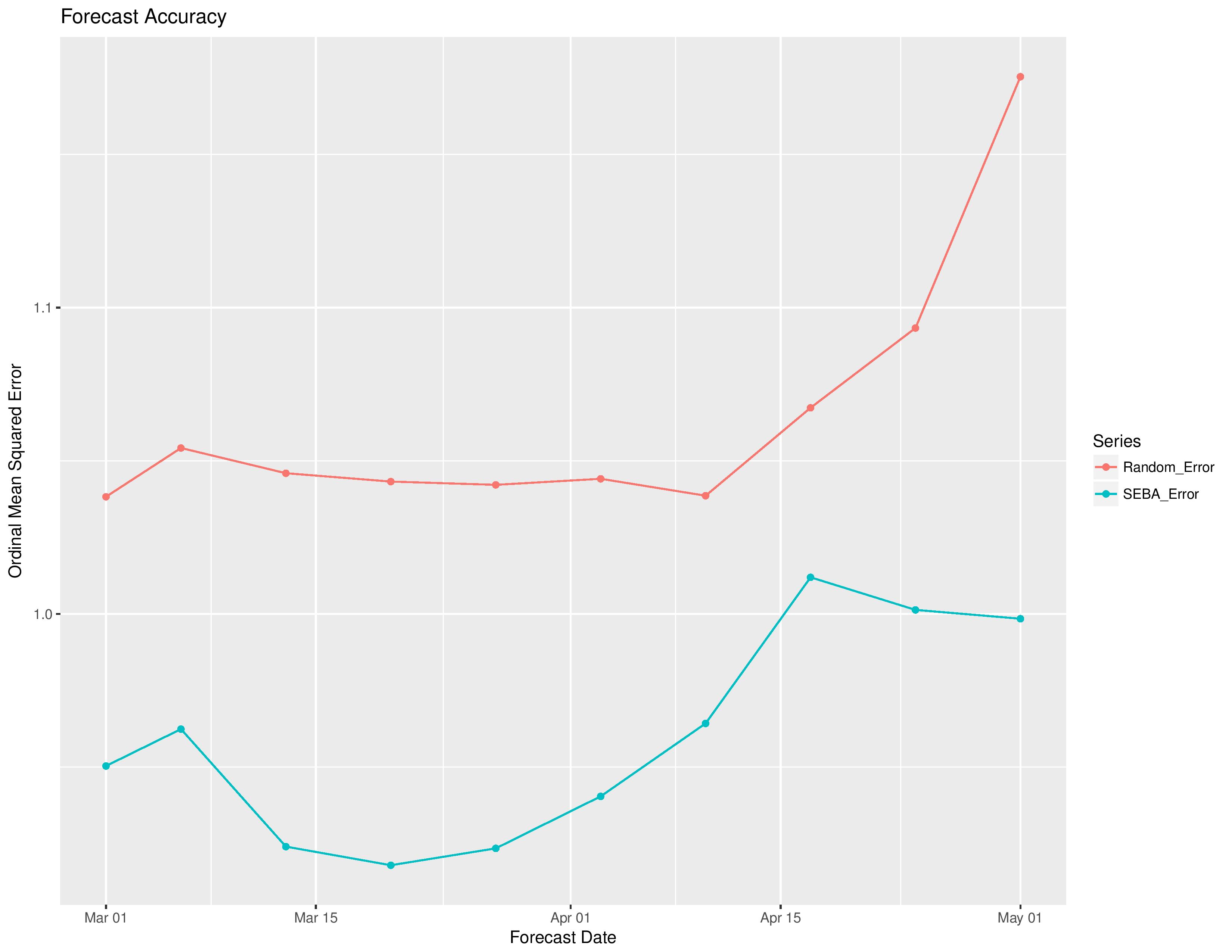
USL
Power Rankings
SEBA has the Bethlehem Steel decrease to 20th from 19th. It has Harrisburg City moving down to 17th from 13th.

The following shows the evolution of SEBA’s power rankings for the USL East over time.
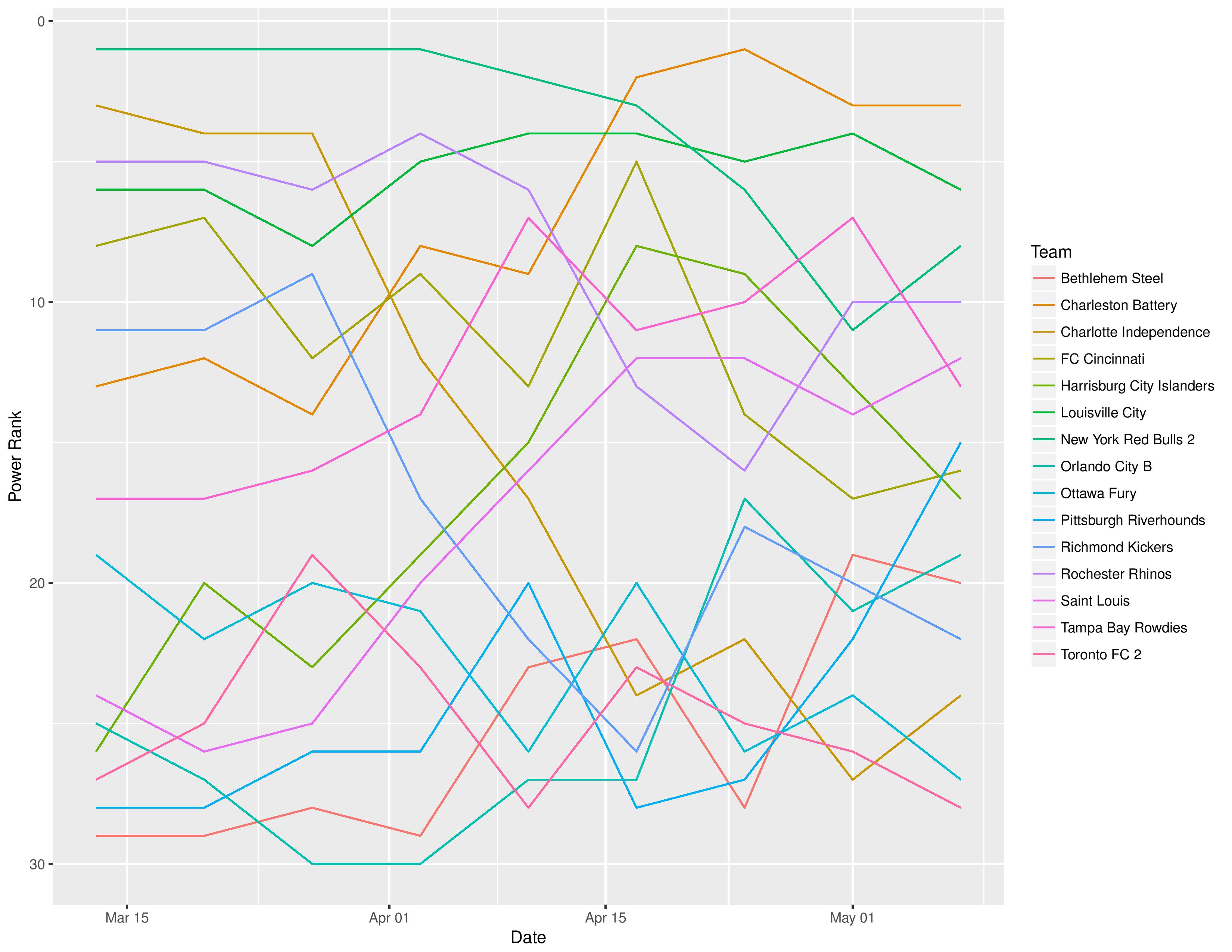
Playoffs probability and more
Bethlehem’s playoff odds decreased from 44.2% to 38.1% and Harrisburg City’s odds decreased from 57.3% to 50.3% in making the playoffs.
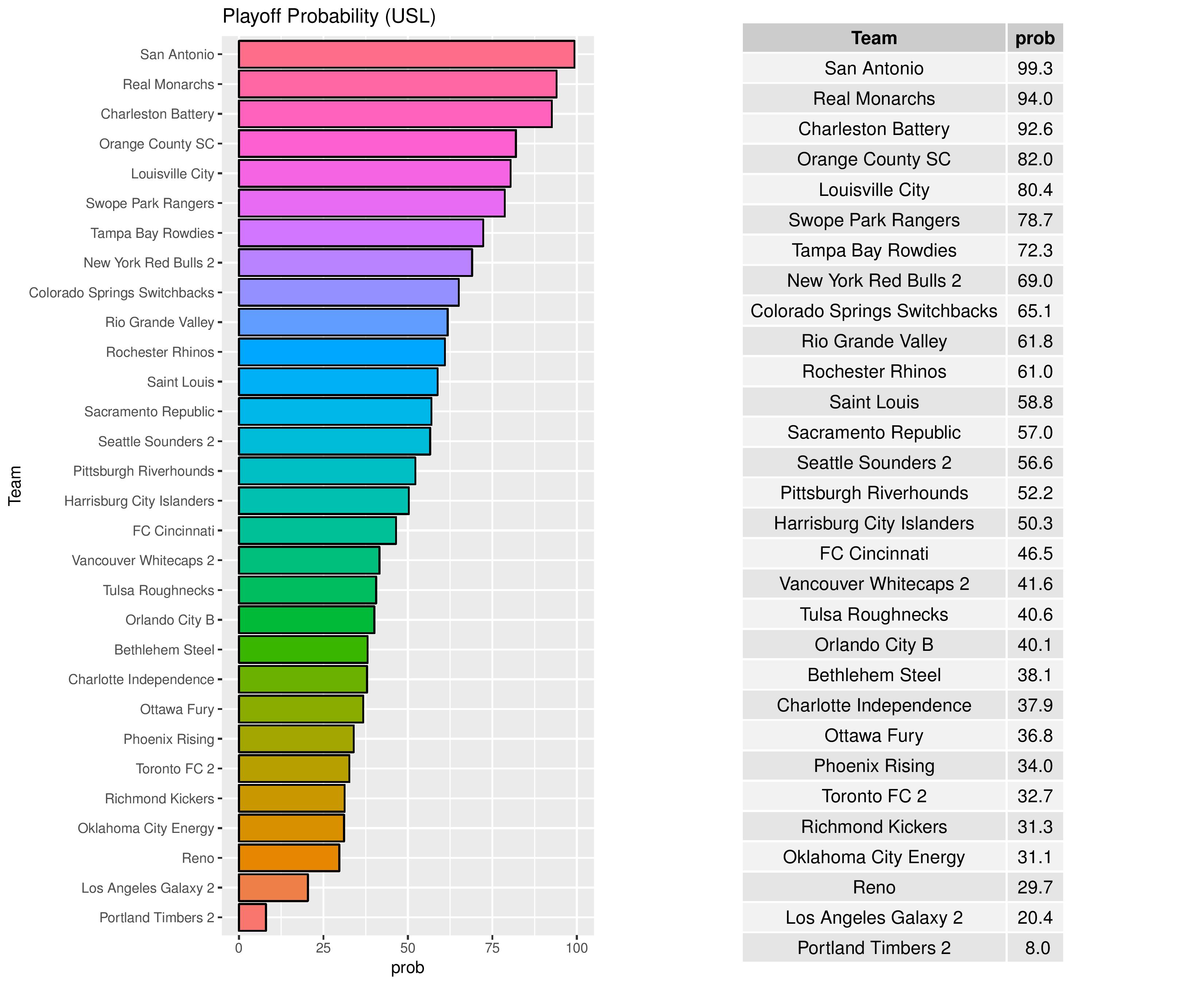
Bethlehem’s chances at winning the Regular Season Title decreased to 0.2% from 0.6% while Harrisburg City decreased from 1.1% to 0.5%.
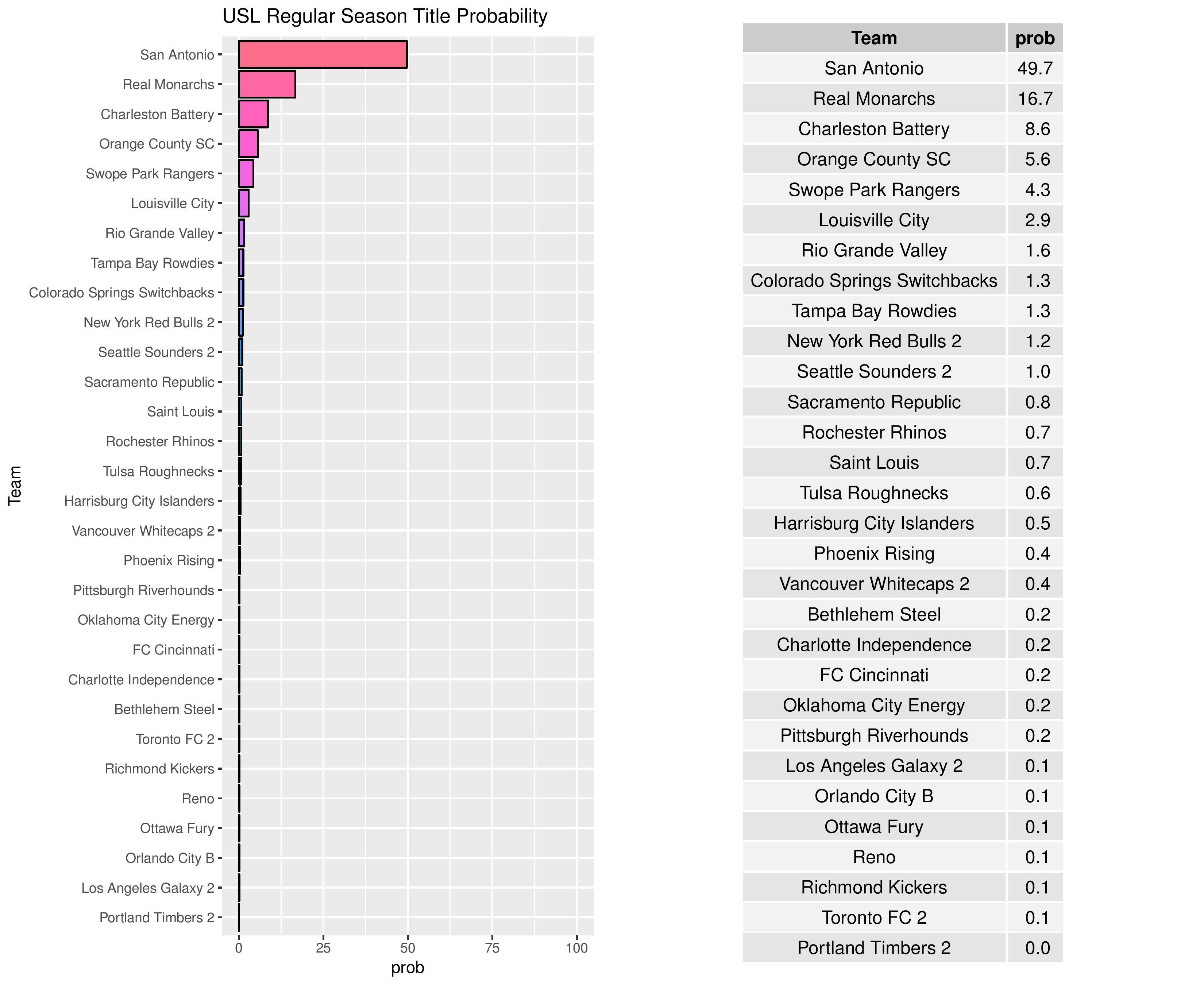
Bethlehem’s odds at becoming the USL Champion decreased from 2.0% to 1.3% while Harrisburg City’s decreased from 3.4% to 2.0%:
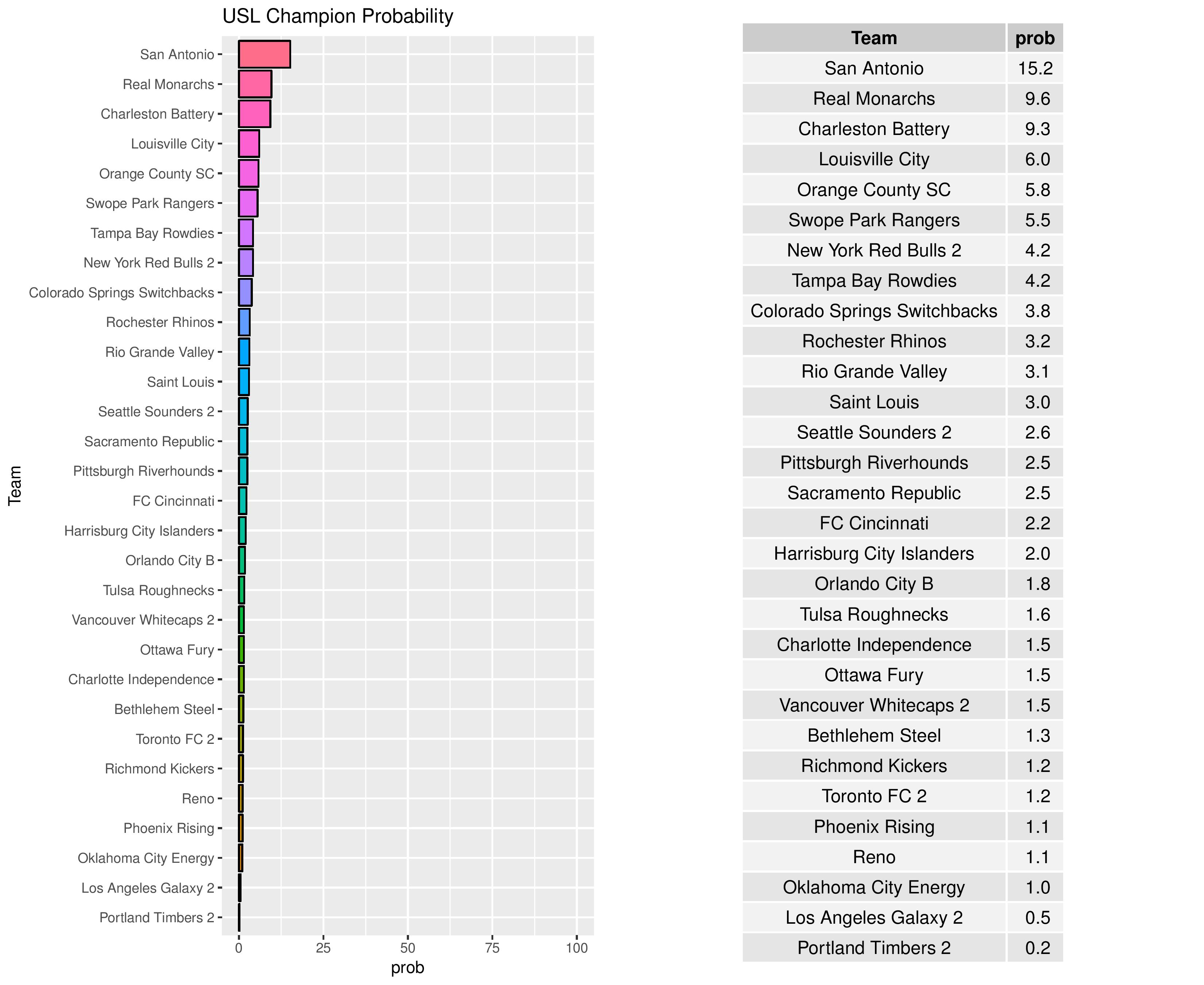
The USOC odds for USL clubs alone are as follows. Harrisburg decreased to 0.6% odds from 0.7%.
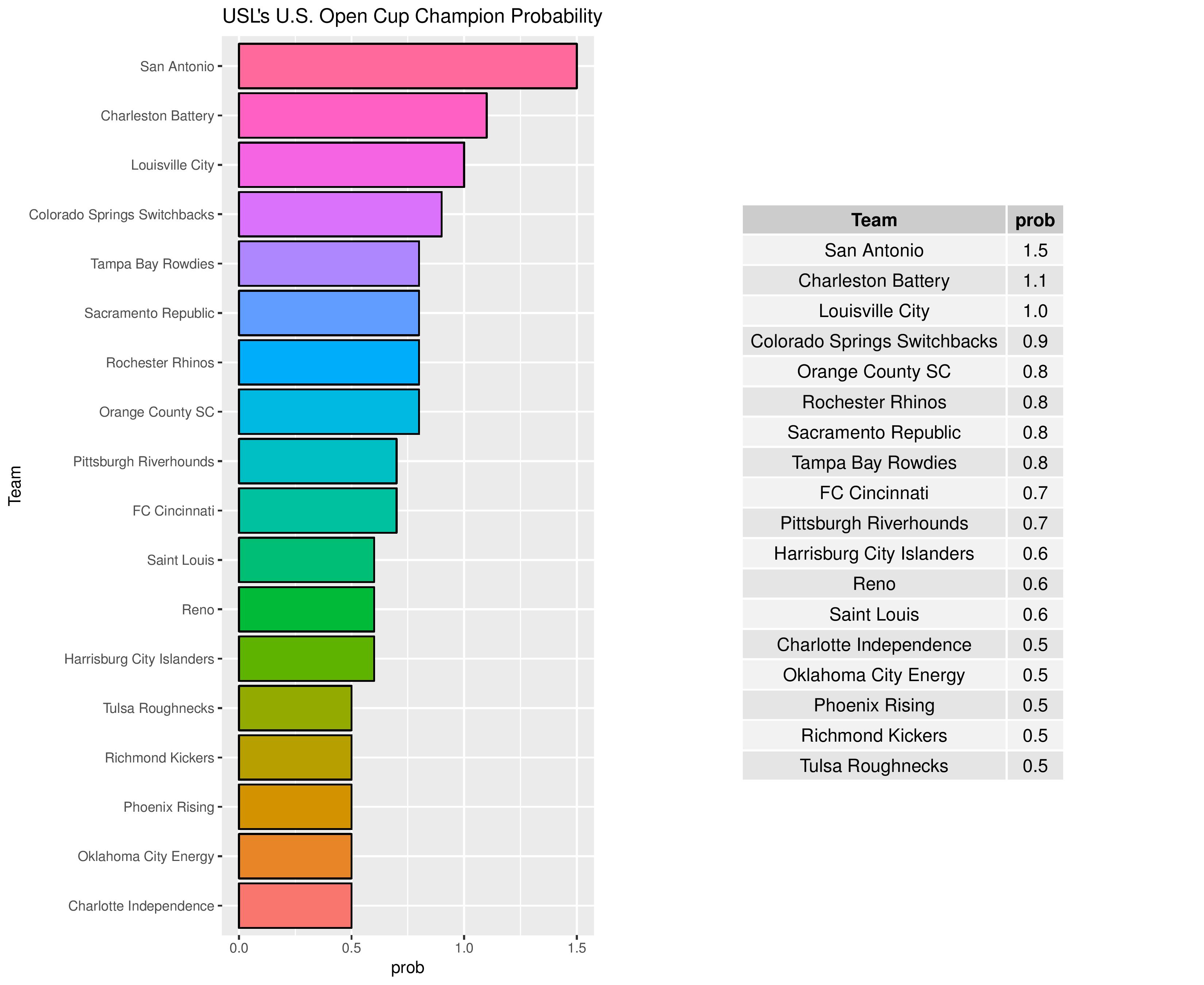
Over time, we can see how the odds for different prizes change for Bethlehem and Harrisburg.
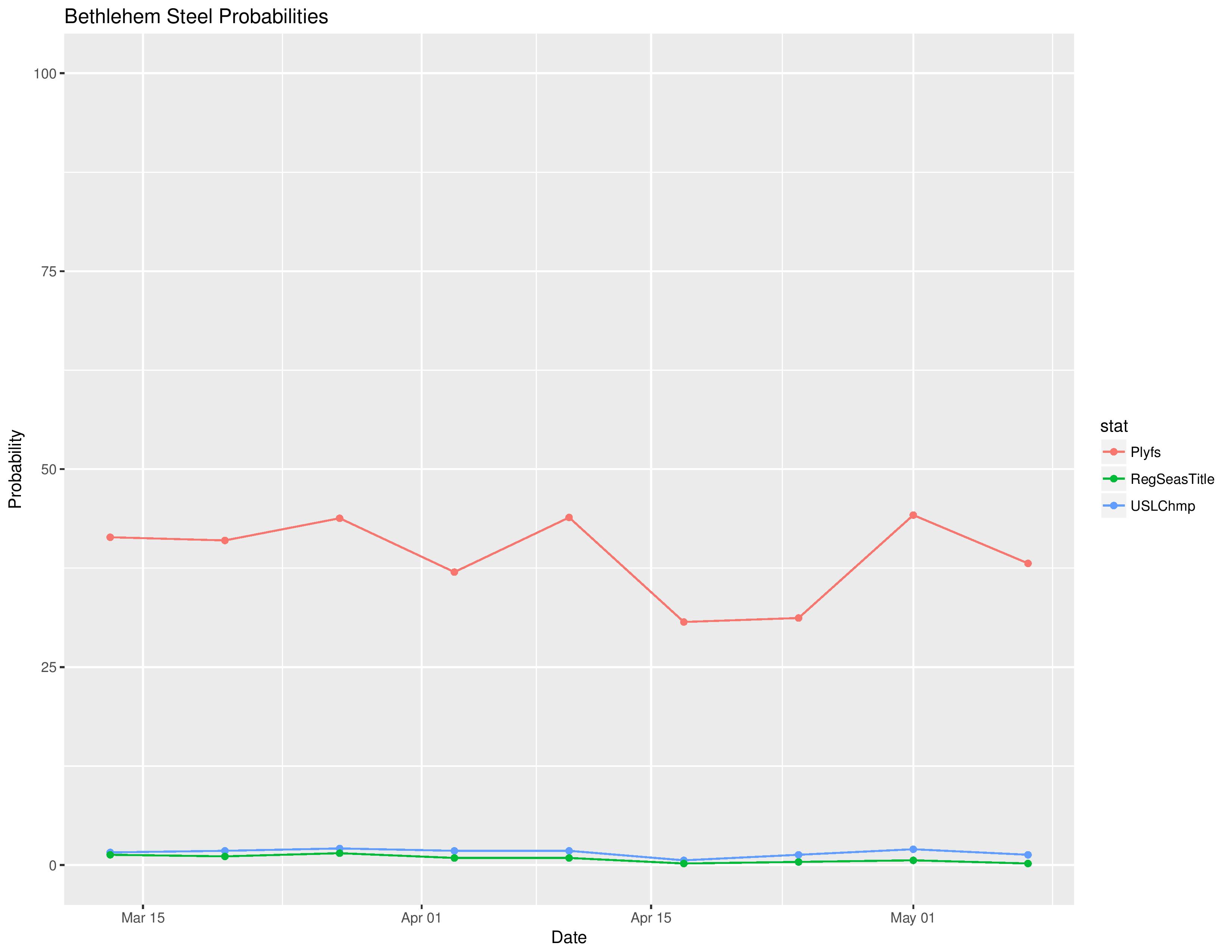
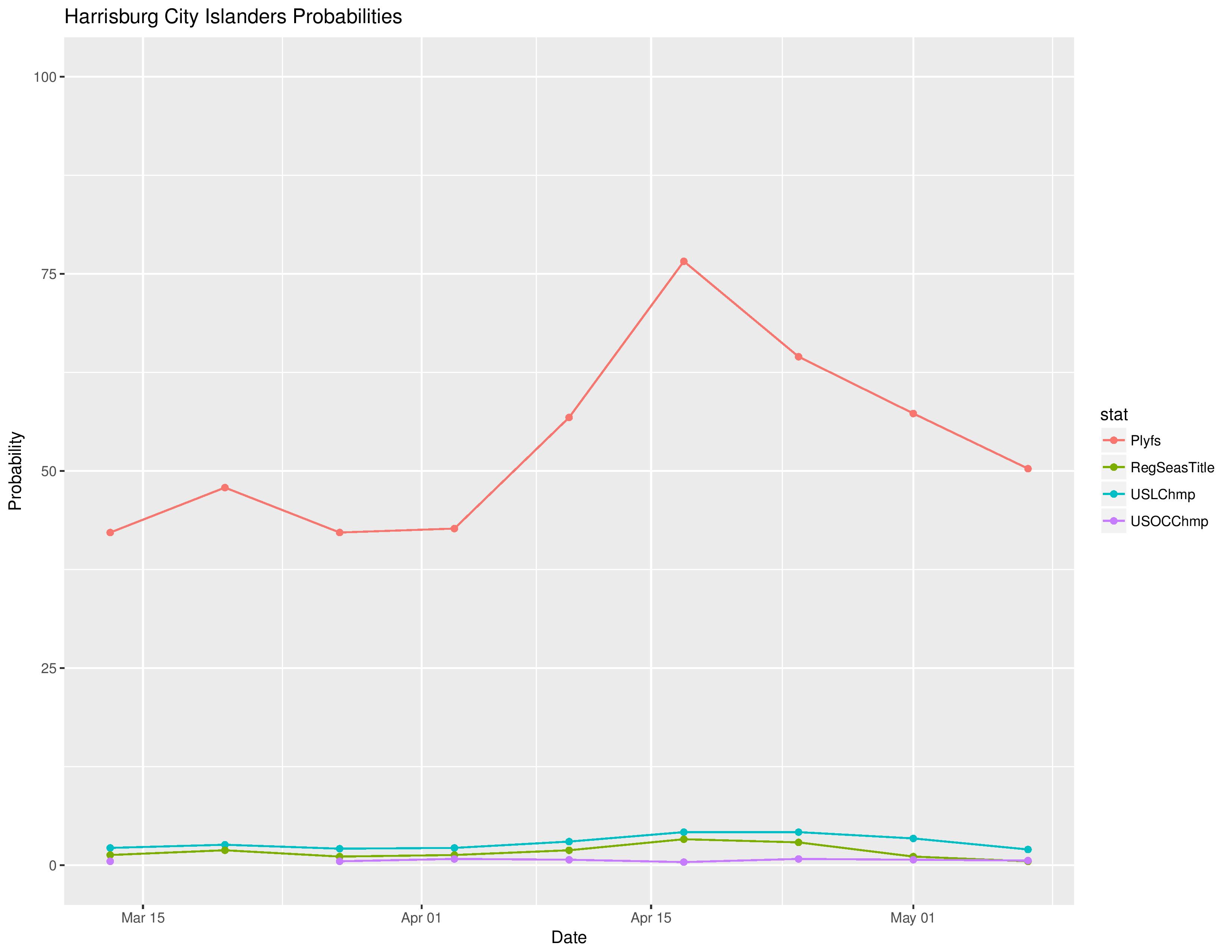
The following are probabilities for each category of outcomes for Bethlehem.
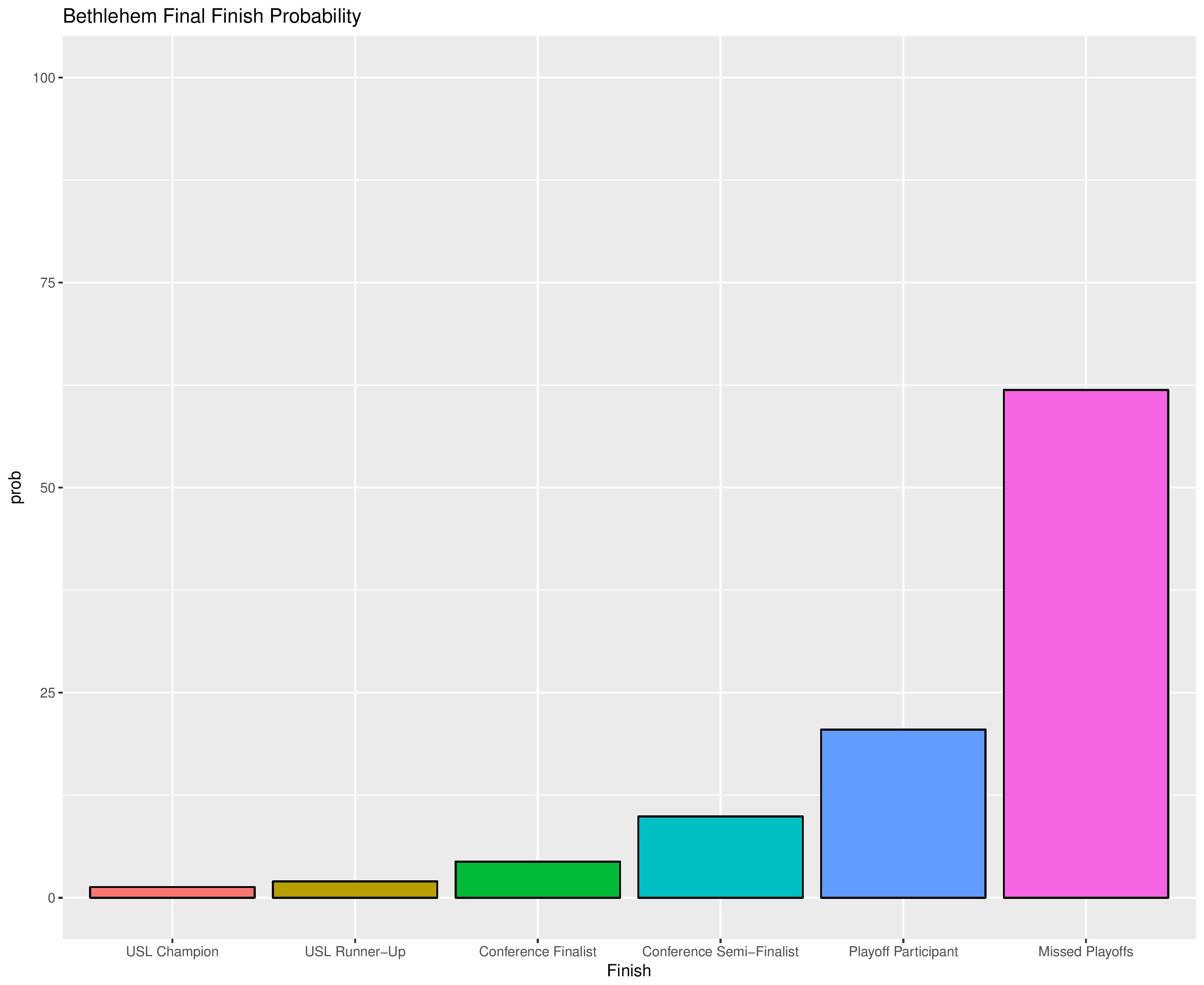
The following are probabilities for each category of outcomes for Harrisburg City.

The following shows the probability of each post-playoff ranking finish.
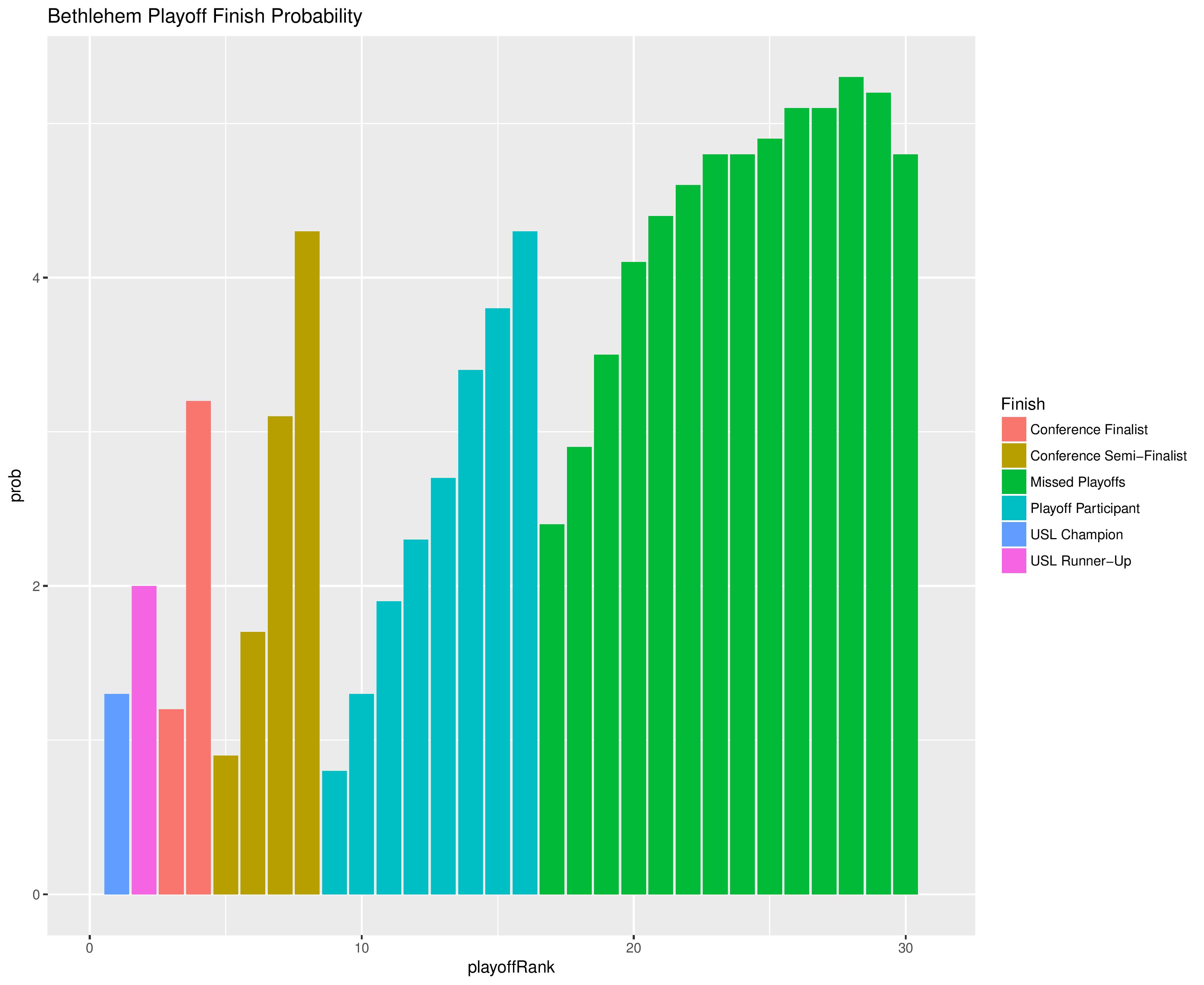
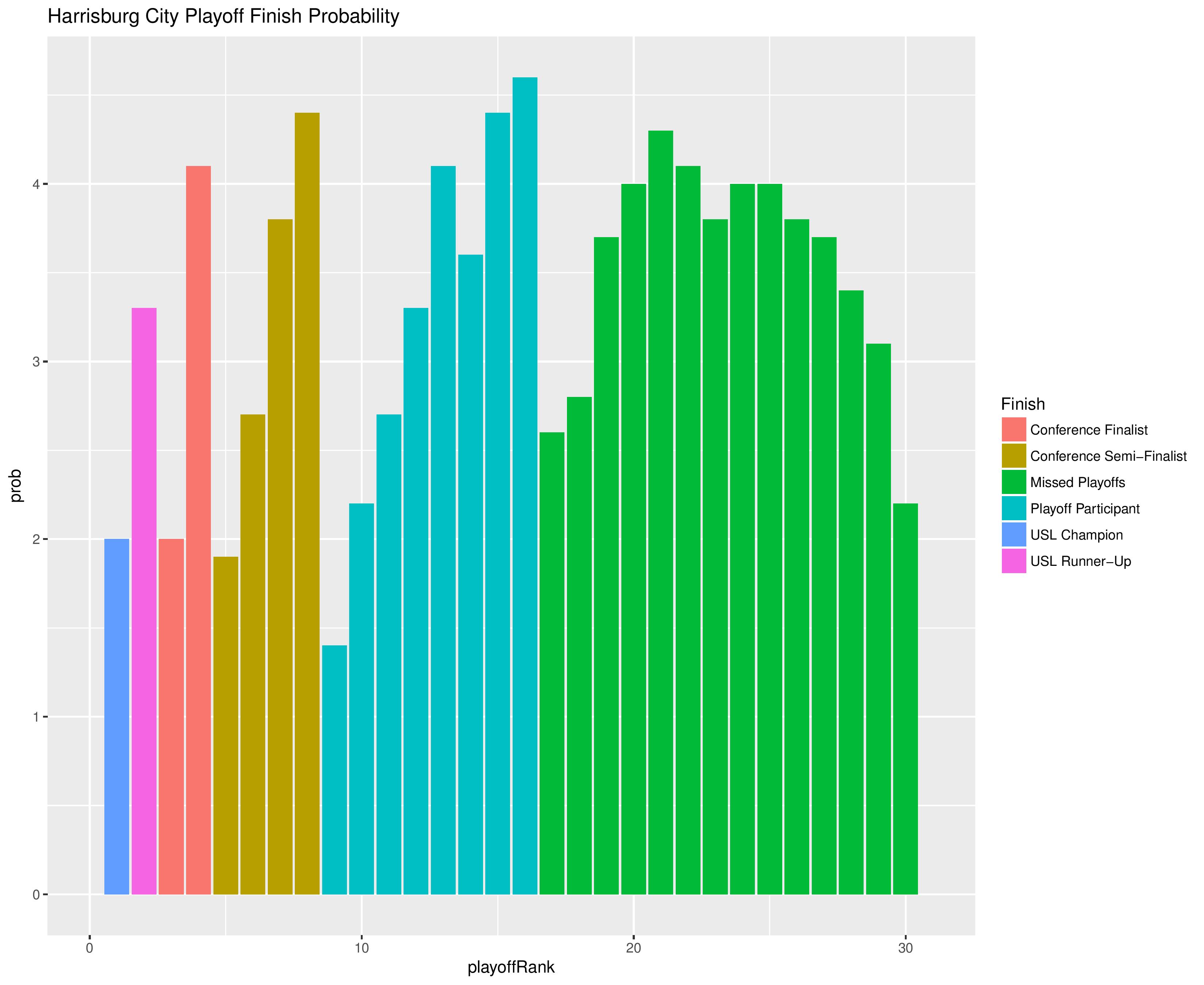
The following shows the summary of the simulations in an easy table format.
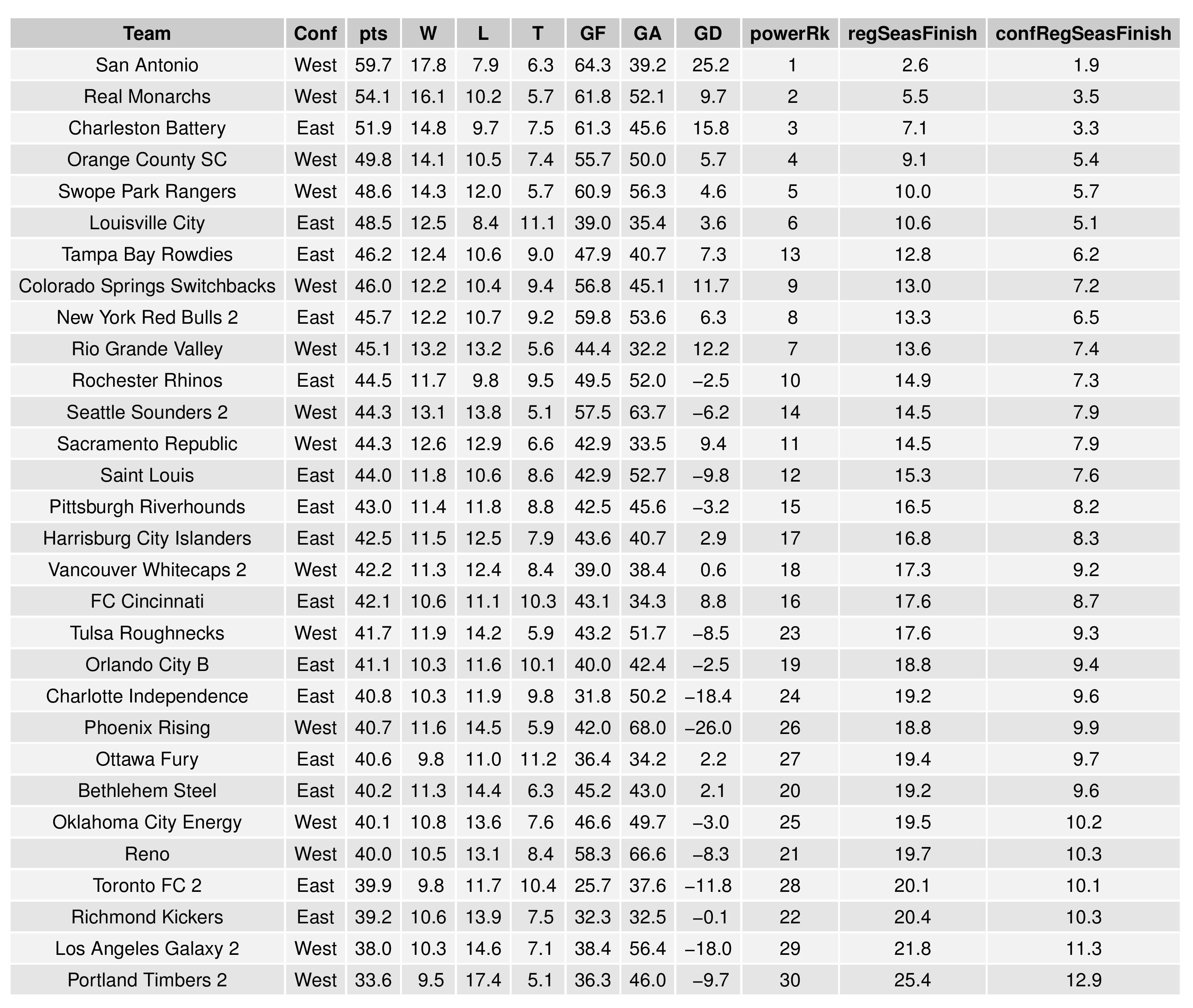
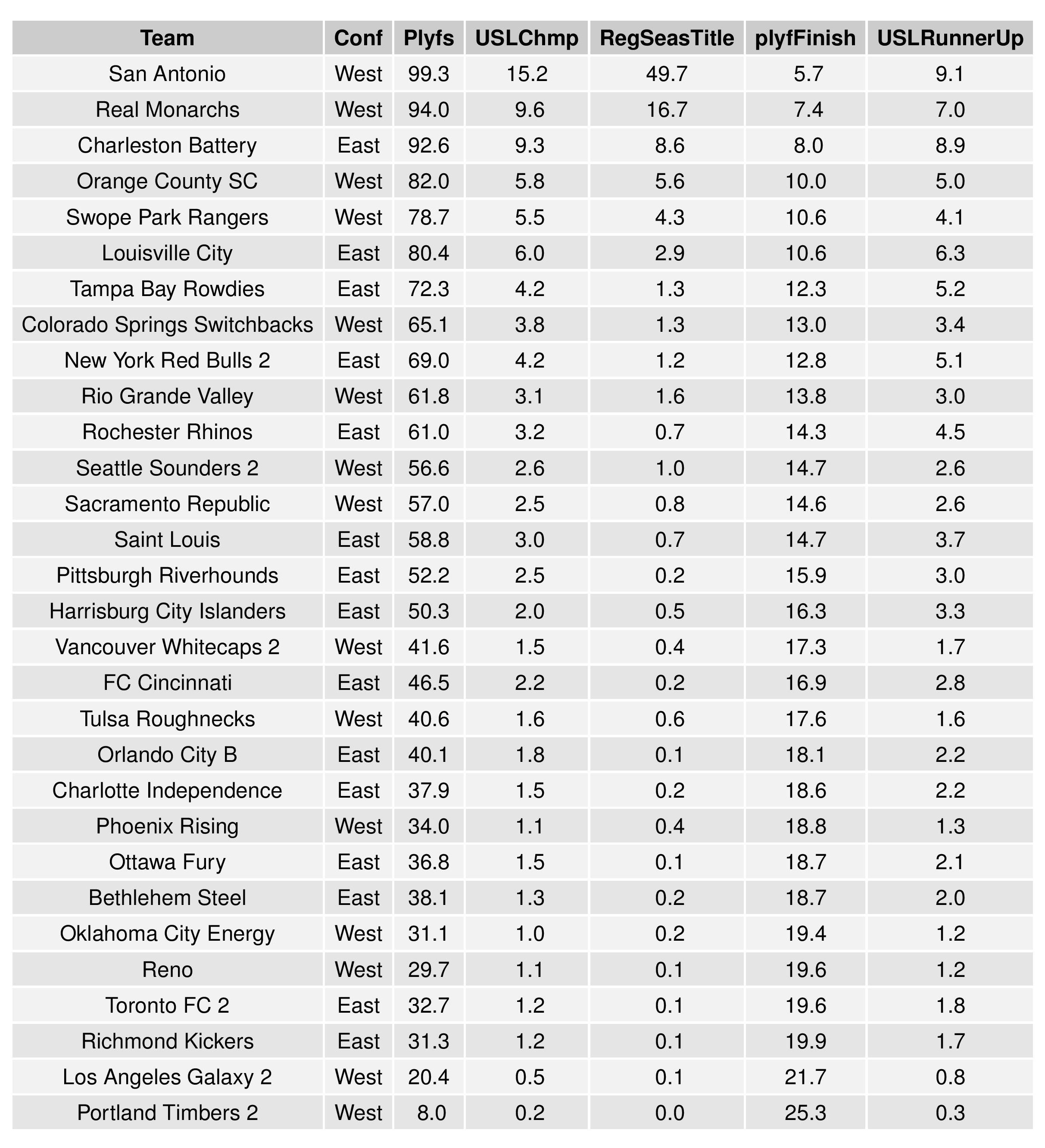
As a new feature, we can also show how the Remaining Strength of Schedule affects each team.
The “Points Percentage Advantage” shown on the X-axis represents the percentage of points expected over the league average schedule. This “points expected” value is generated by simulating how all teams would perform with all remaining schedules (and therefore judges a schedule based upon how all teams would perform in that scenario).
In short, the higher the value, the easier the remaining schedule.
Remaining home field advantage will make a large contribution here. It can also be true that a better team has an ‘easier’ schedule simply because they do not have to play themselves. Likewise, a bad team may have a ‘harder’ schedule because they also do not play themselves.
The table following the chart also shares helpful context with these percentages.
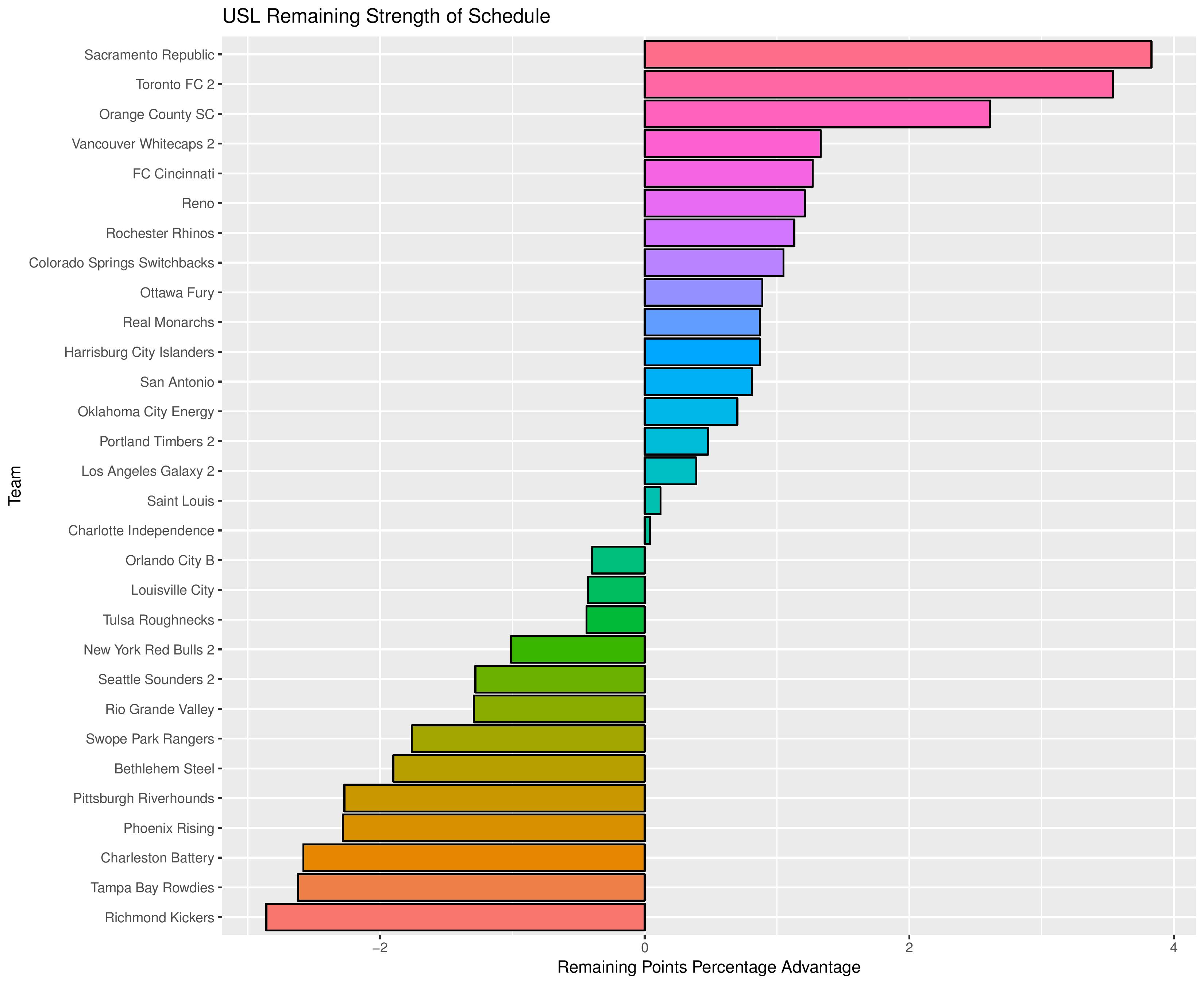
Accompanying the advantage percentage in the following table is their current standings rank (right now ties are not properly calculated beyond pts/gd/gf), the remaining home matches, the remaining away matches, the current average points-per-game of future opponents (results-based, not model-based), and the average power ranking of future opponents according to SEBA.

The following shows the expectations for upcoming matches for both Bethlehem and Harrisburg:
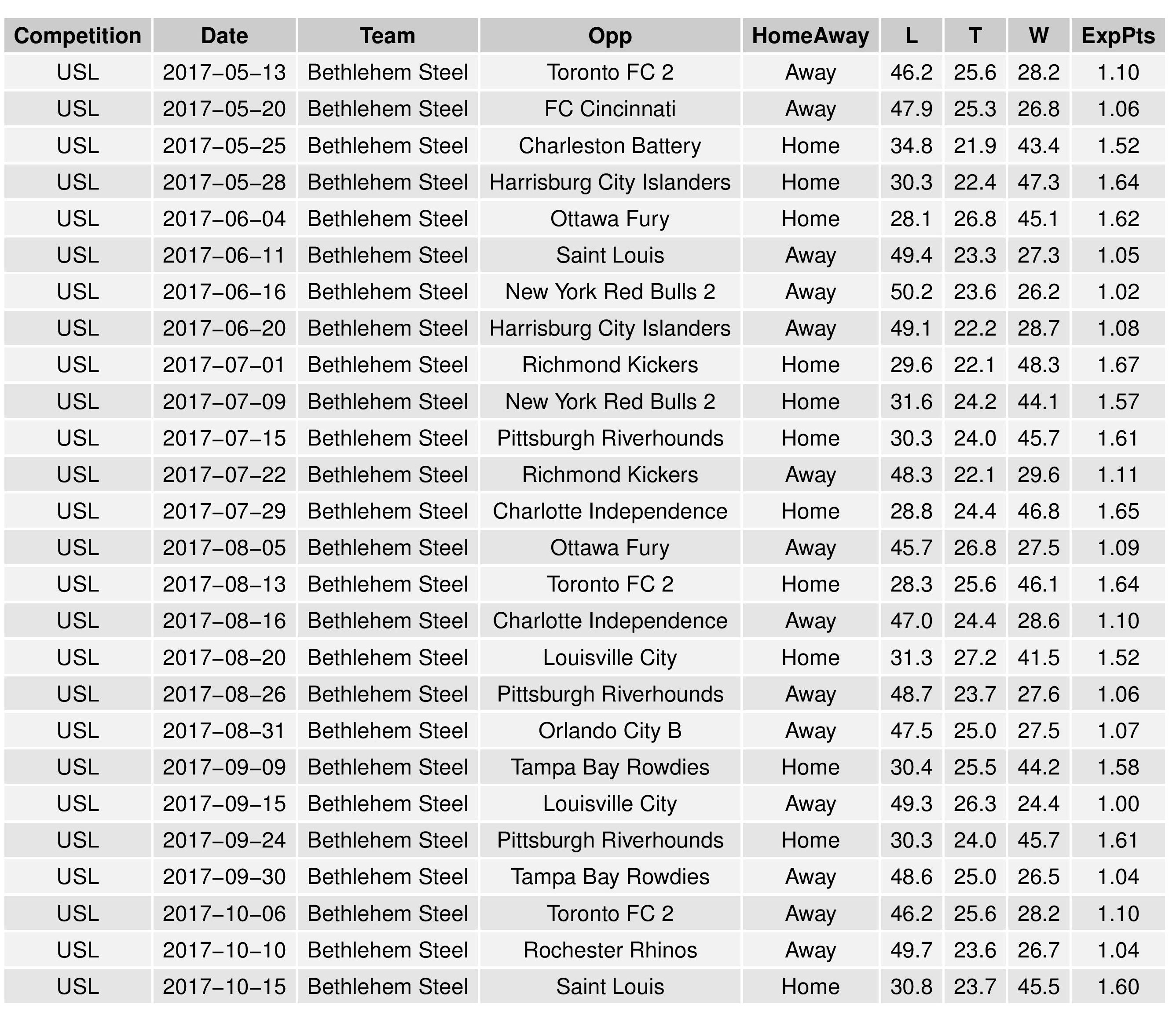
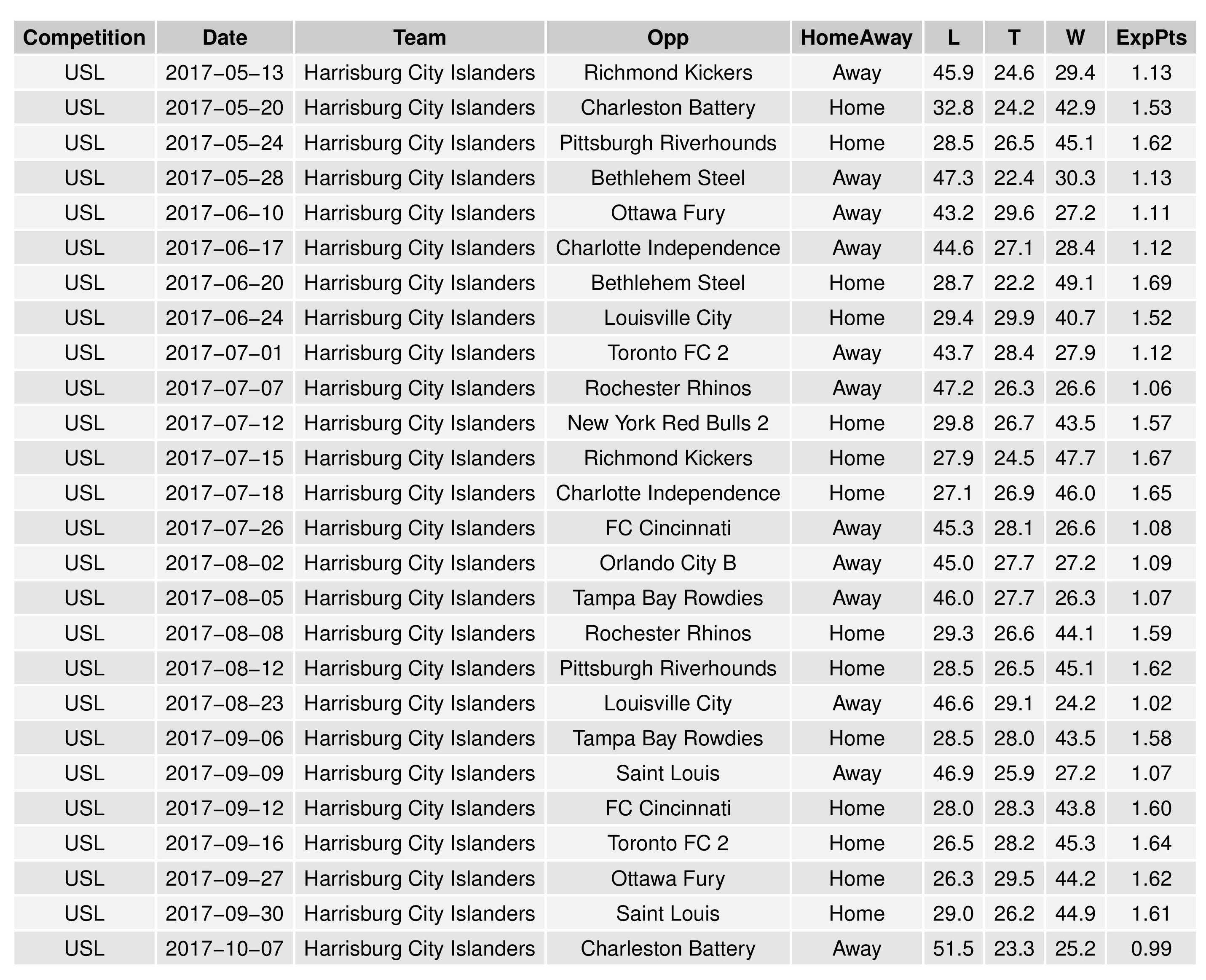
Model Validation
This chart is the same as that in the MLS forecast (except for USL matches instead of MLS).
Remember that these data points are not fixed until the end of the season.
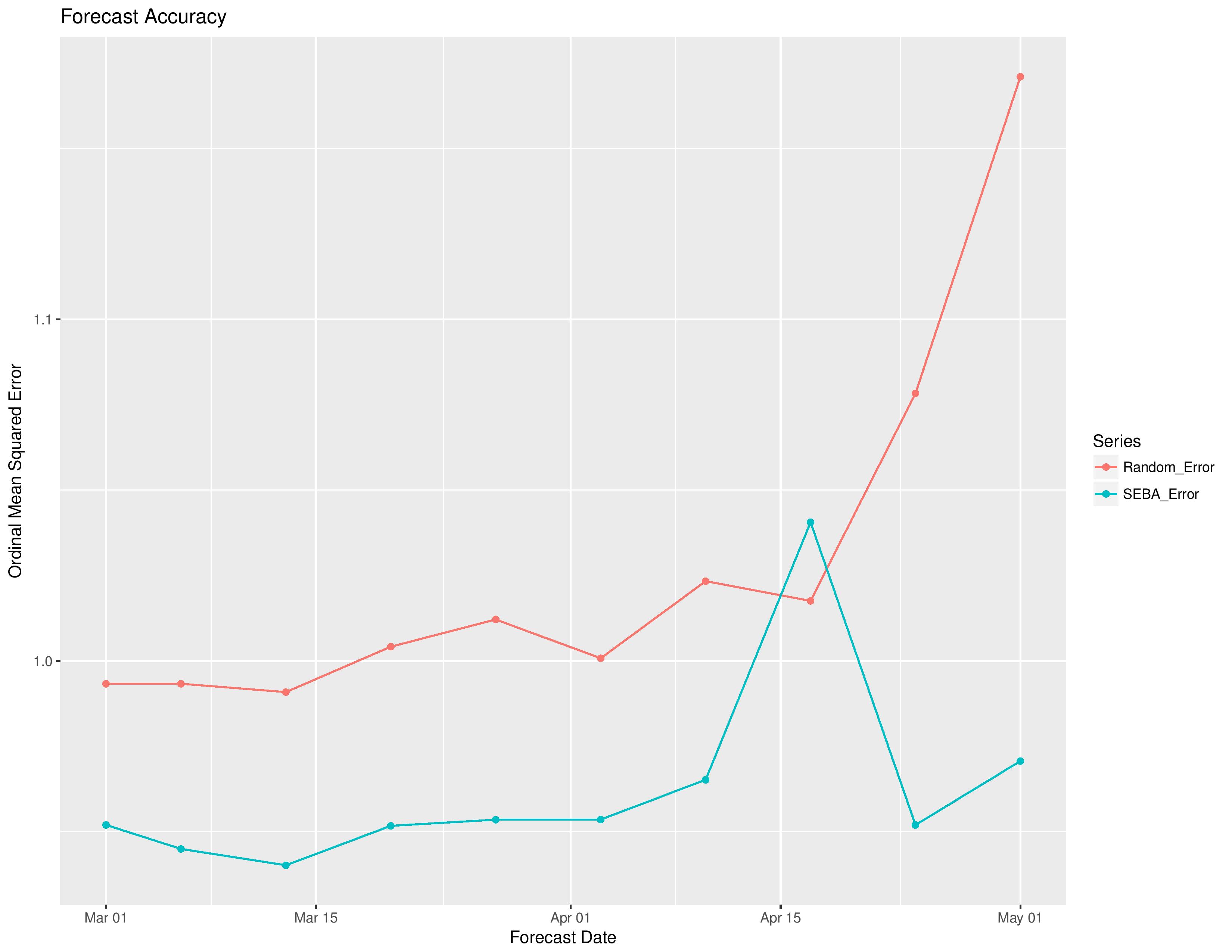
NWSL
Power Rankings
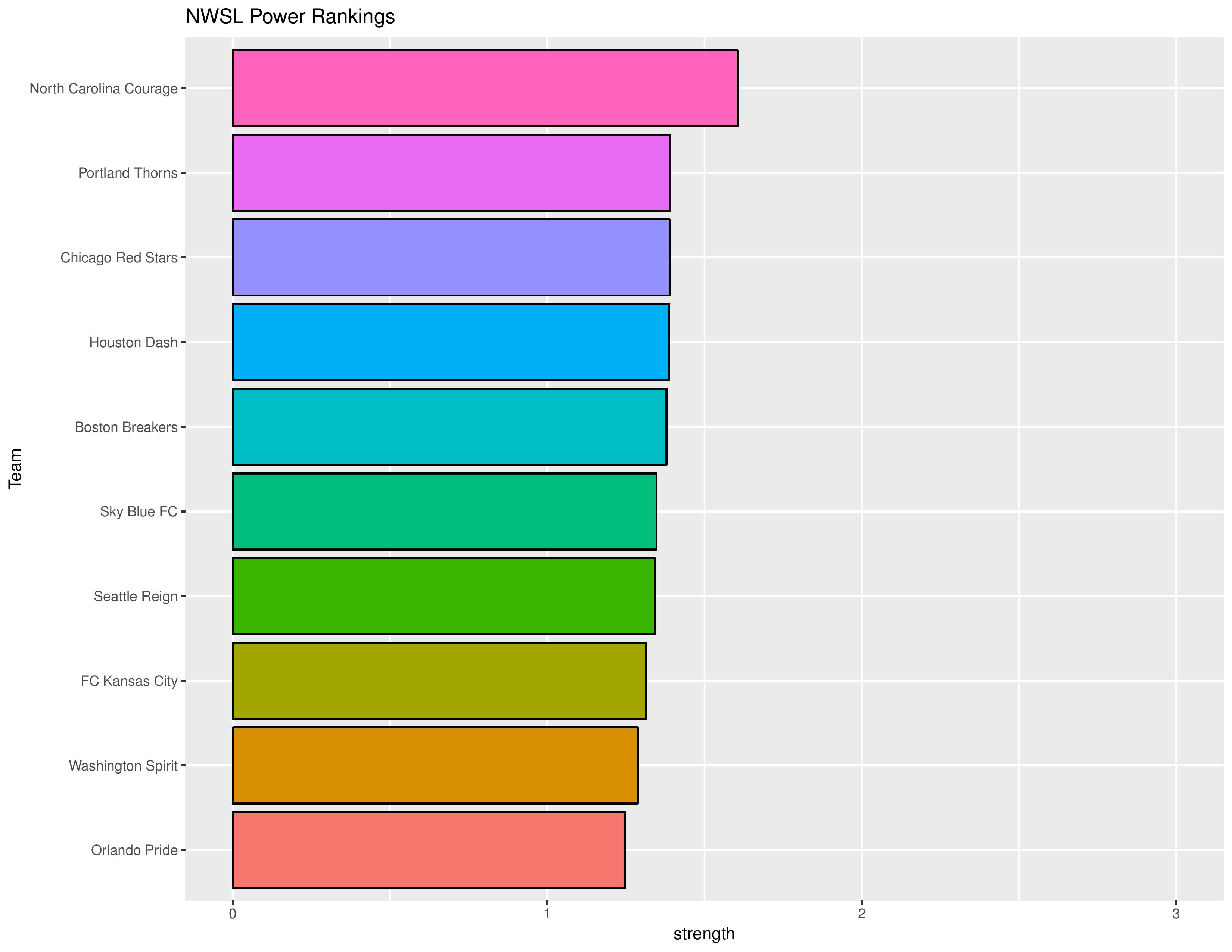

Playoffs probability and more
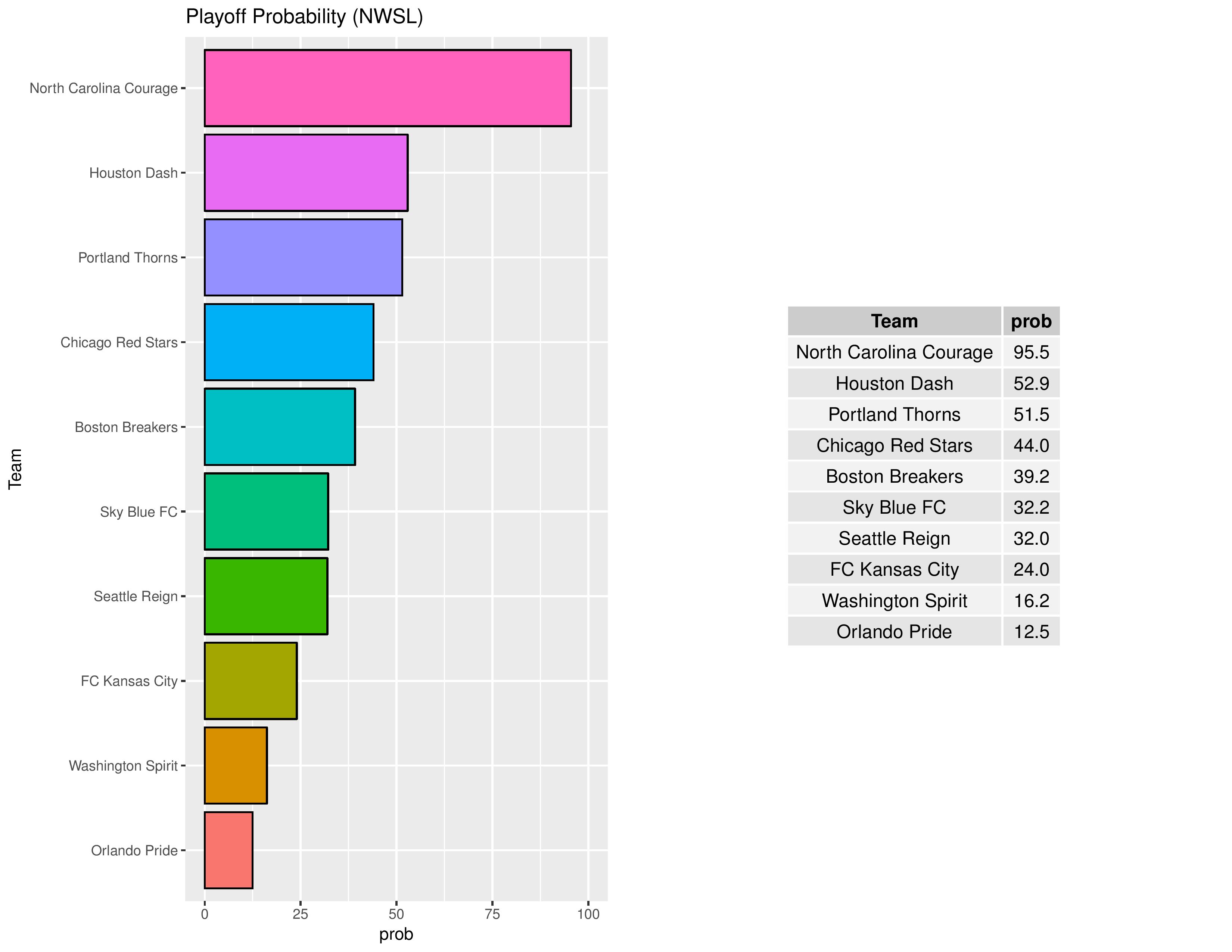
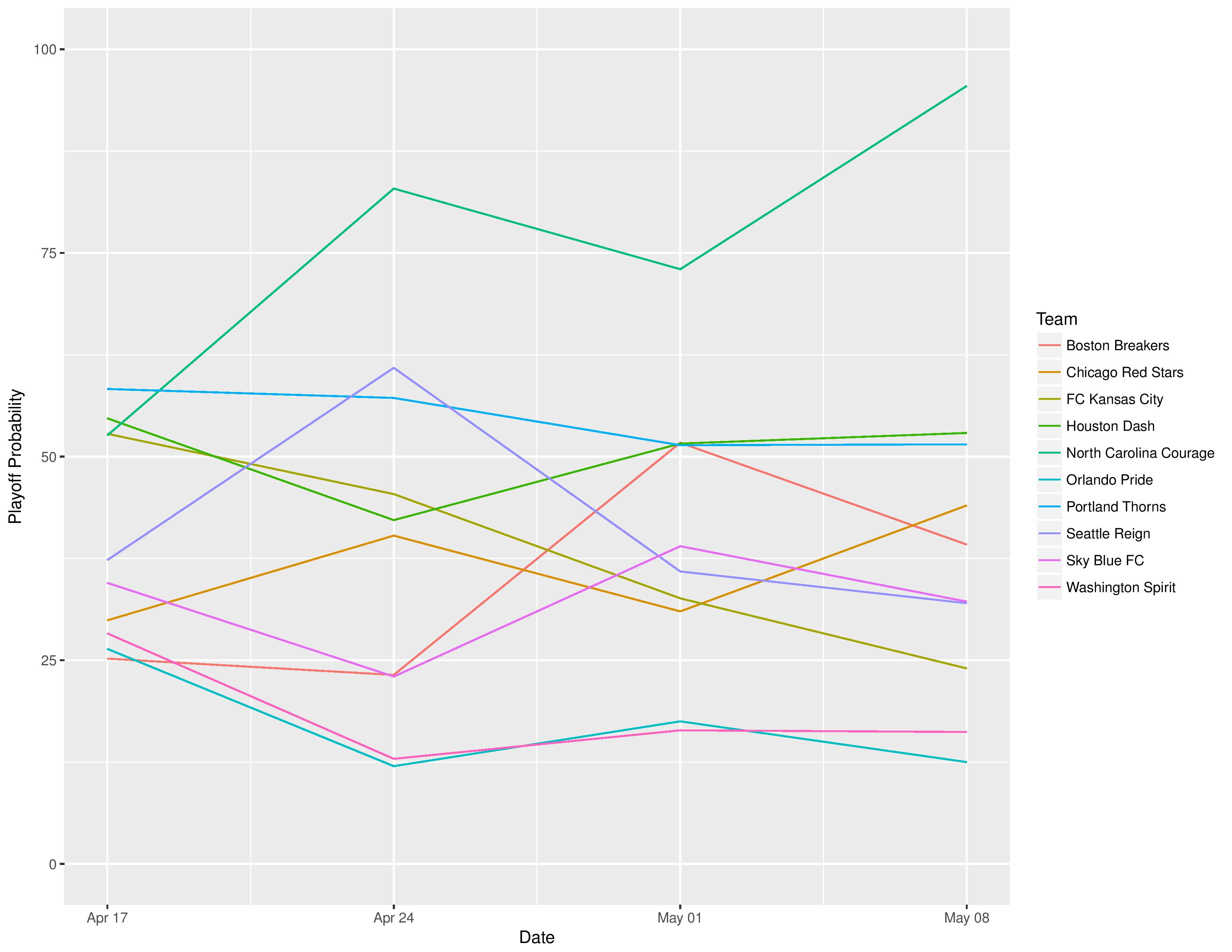
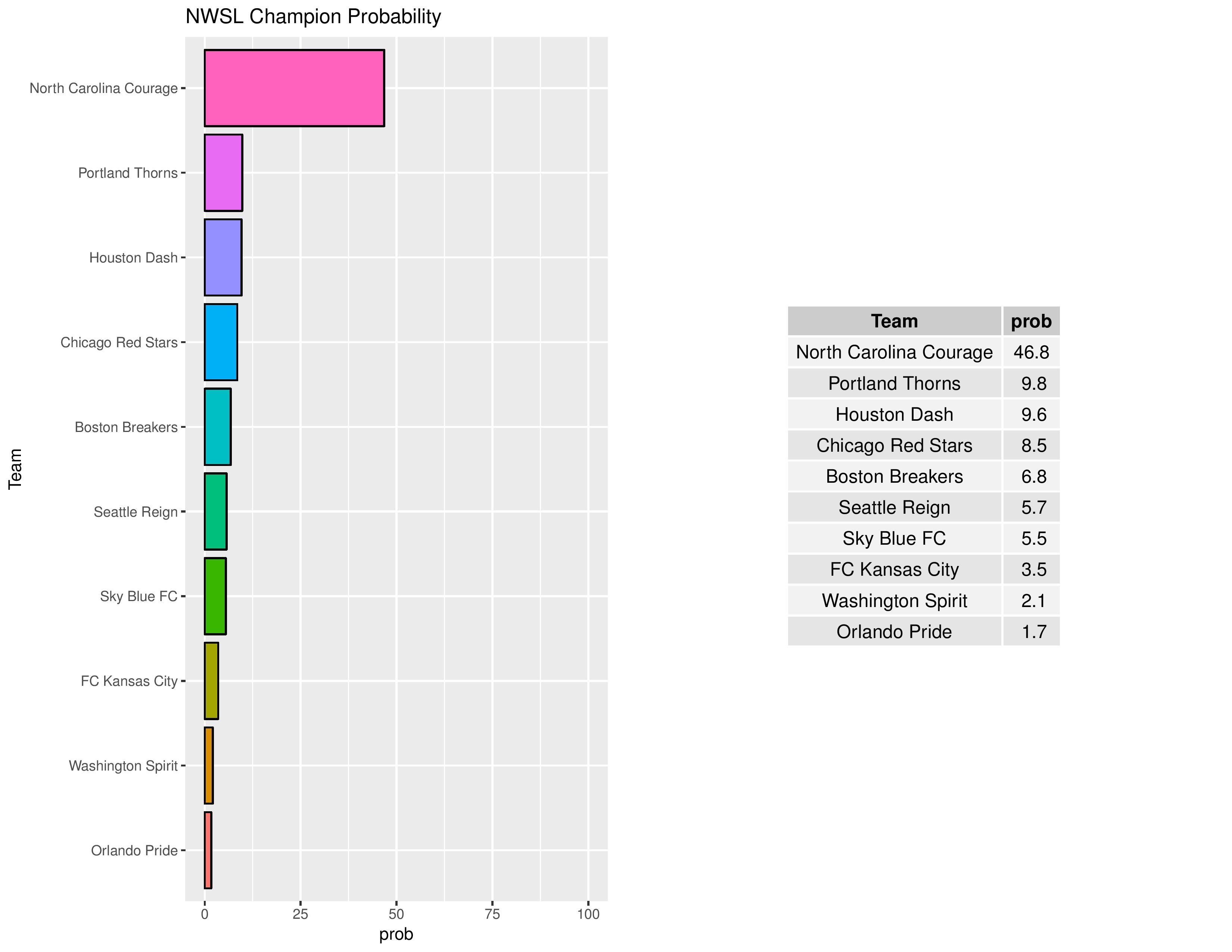

The following shows the summary of the simulations in an easy table format.
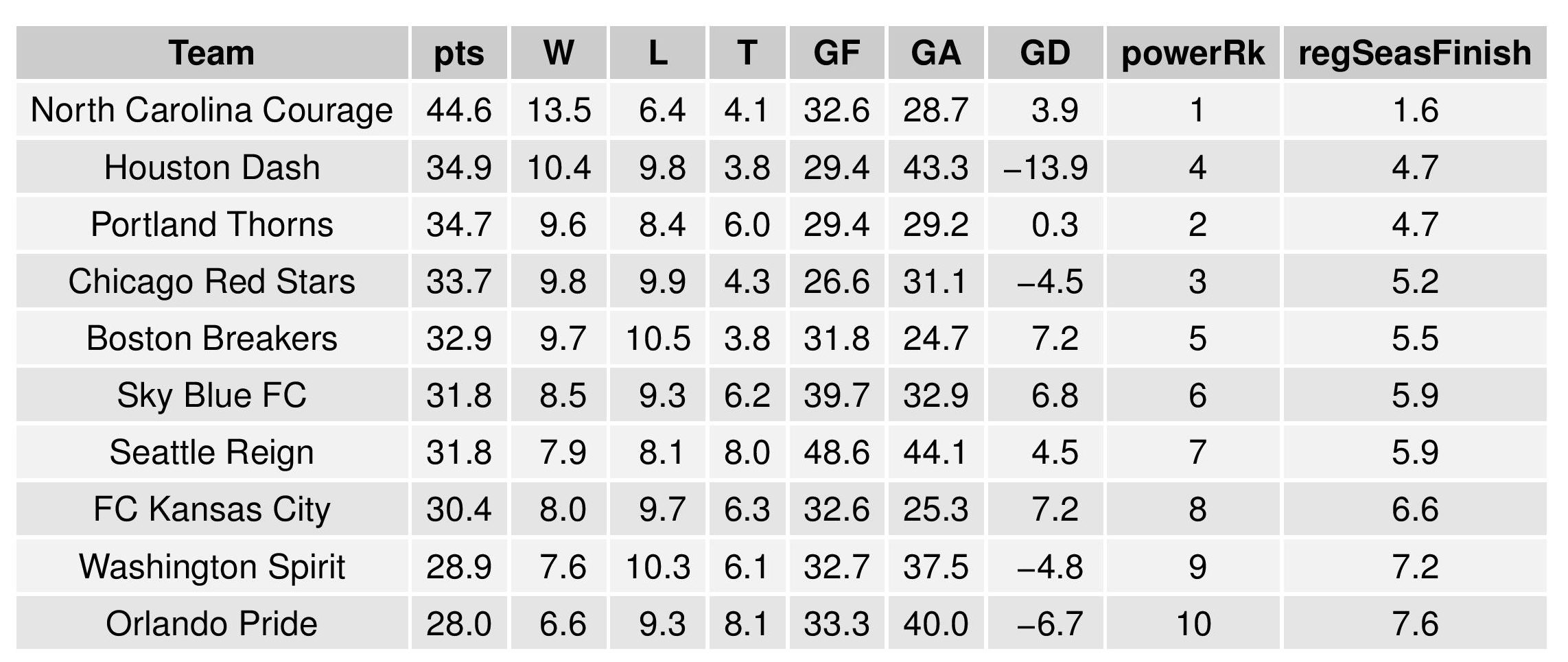
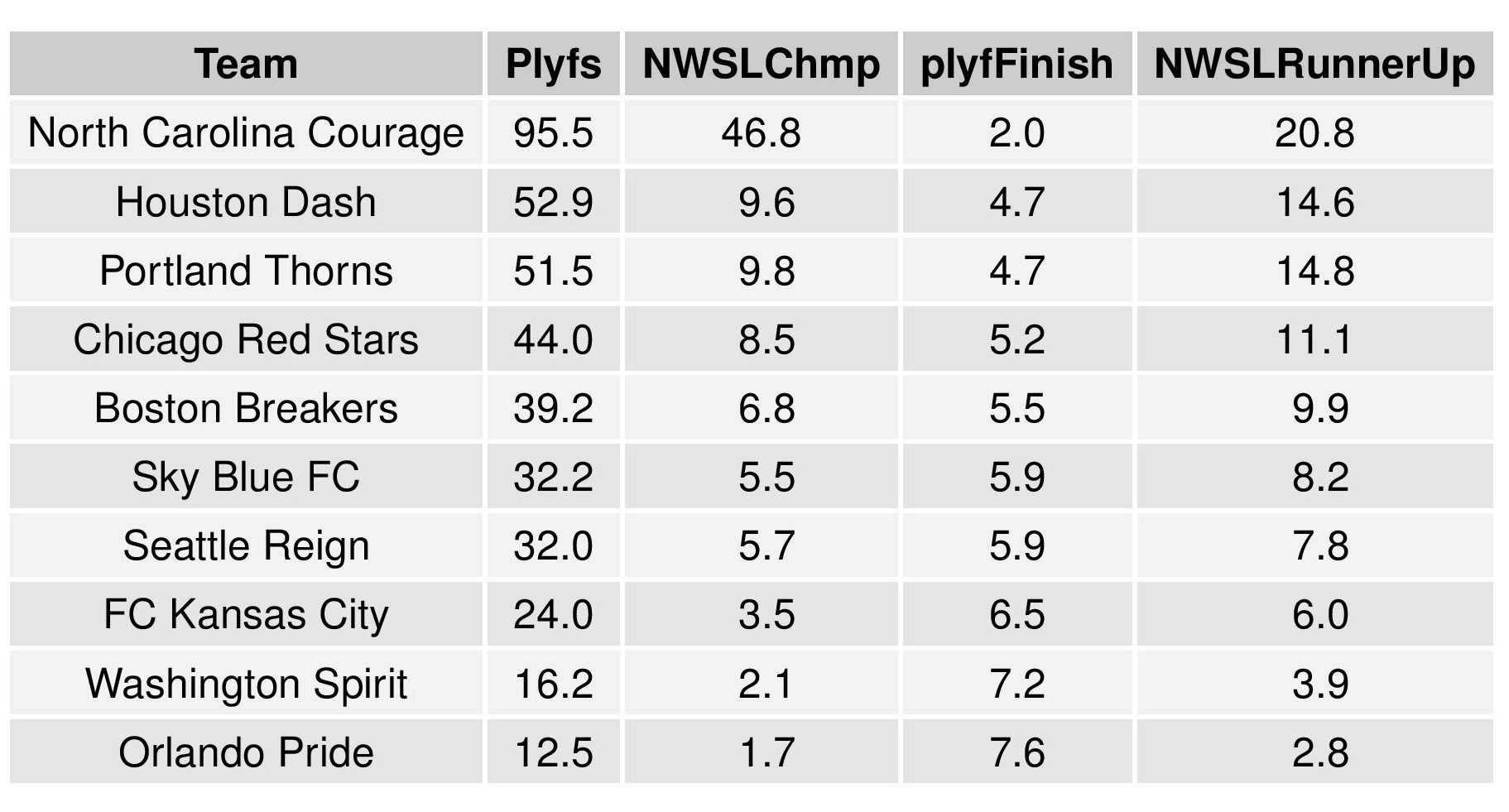
As a new feature, we can also show how the Remaining Strength of Schedule affects each team.
The “Points Percentage Advantage” shown on the X-axis represents the percentage of points expected over the league average schedule. This “points expected” value is generated by simulating how all teams would perform with all remaining schedules (and therefore judges a schedule based upon how all teams would perform in that scenario).
In short, the higher the value, the easier the remaining schedule.
Remaining home field advantage will be significant here. It can also be true that a better team has an ‘easier’ schedule simply because they do not have to play themselves. Likewise, a bad team may have a ‘harder’ schedule because they also do not play themselves.
The table following the chart also shares helpful context with these percentages.
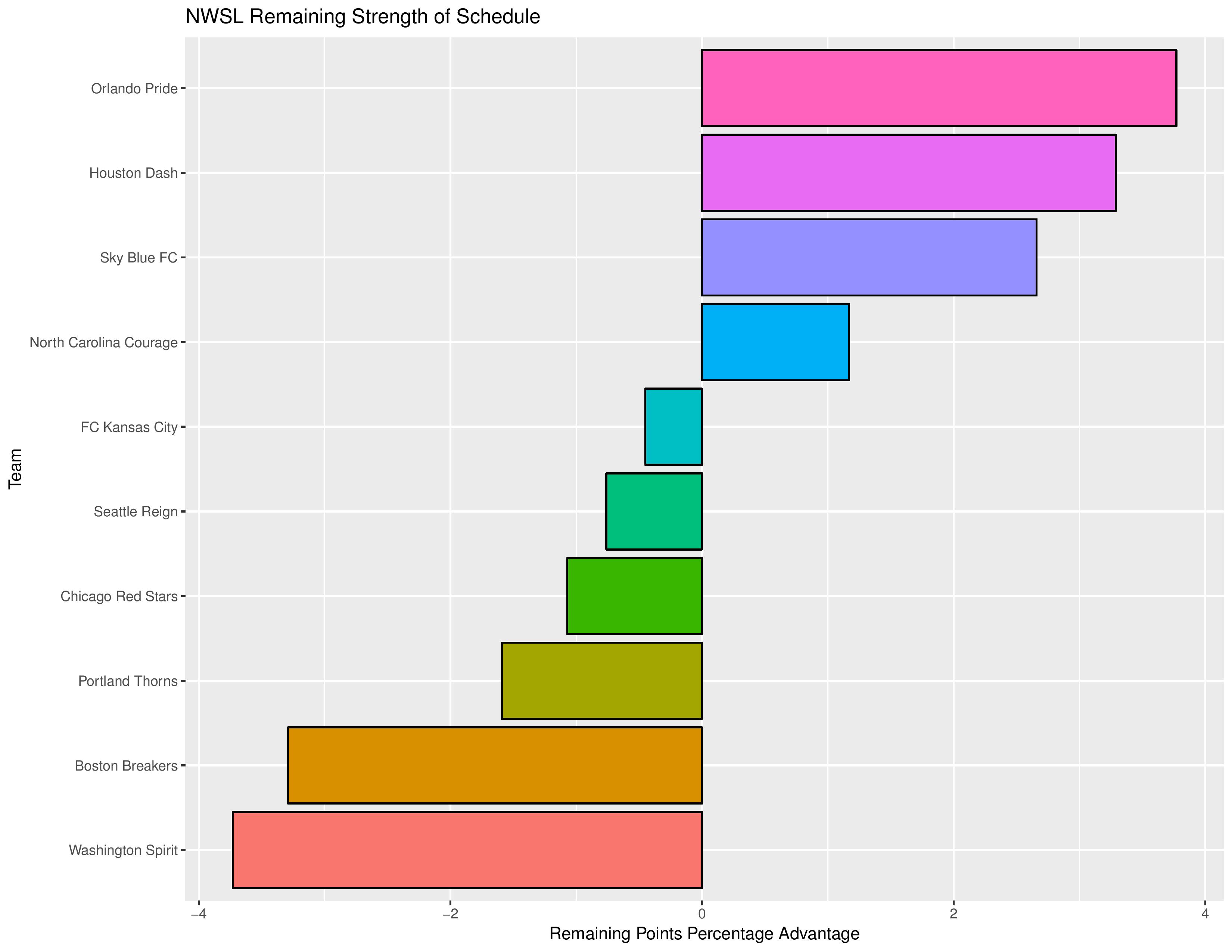
Accompanying the advantage percentage in the following table is their current standings rank (right now ties are not properly calculated beyond pts/gd/gf), the remaining home matches, the remaining away matches, the current average points-per-game of future opponents (results-based, not model-based), and the average power ranking of future opponents according to SEBA.
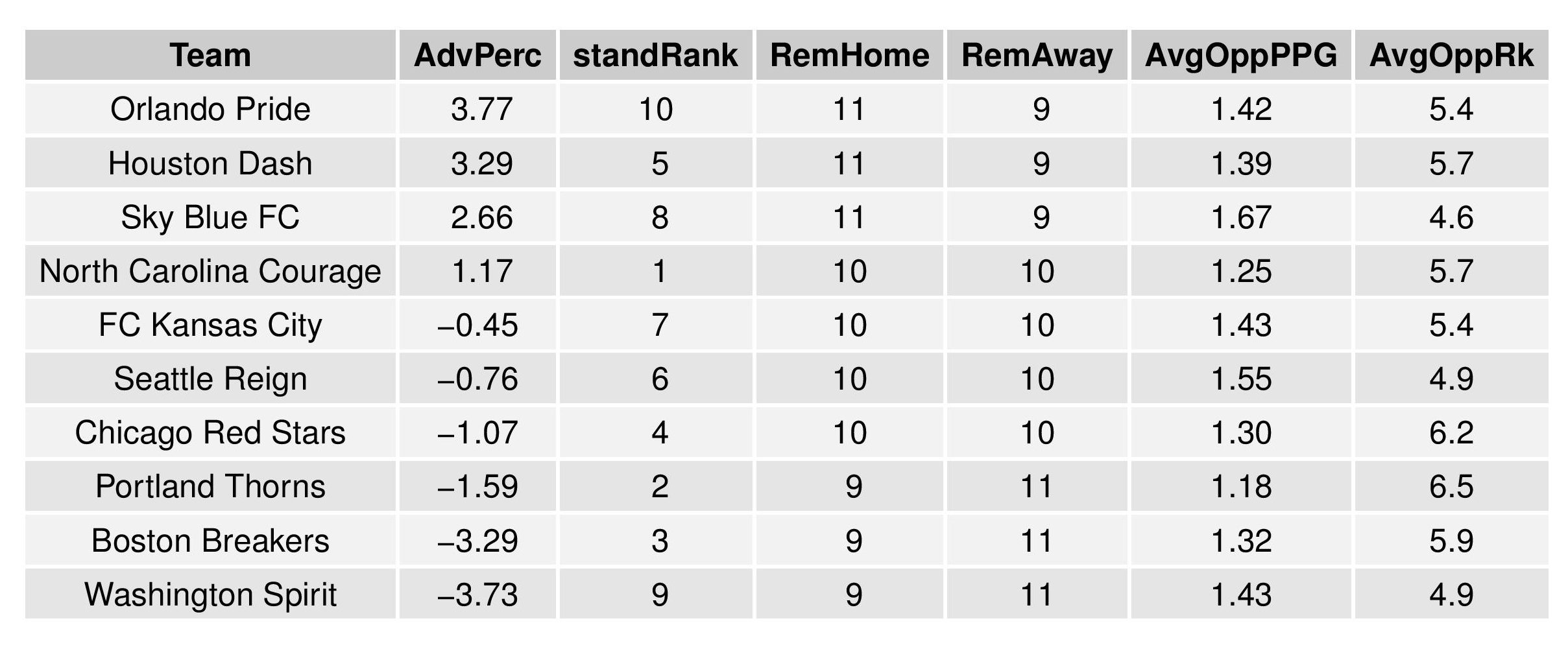
The SEBA Projection System is an acronym for a tortured collection of words in the Statistical Extrapolation Bayesian Analyzer Projection System. Check out the first season’s post to find out how it works (https://phillysoccerpage.net/2017/03/03/2017-initial-seba-projections/)

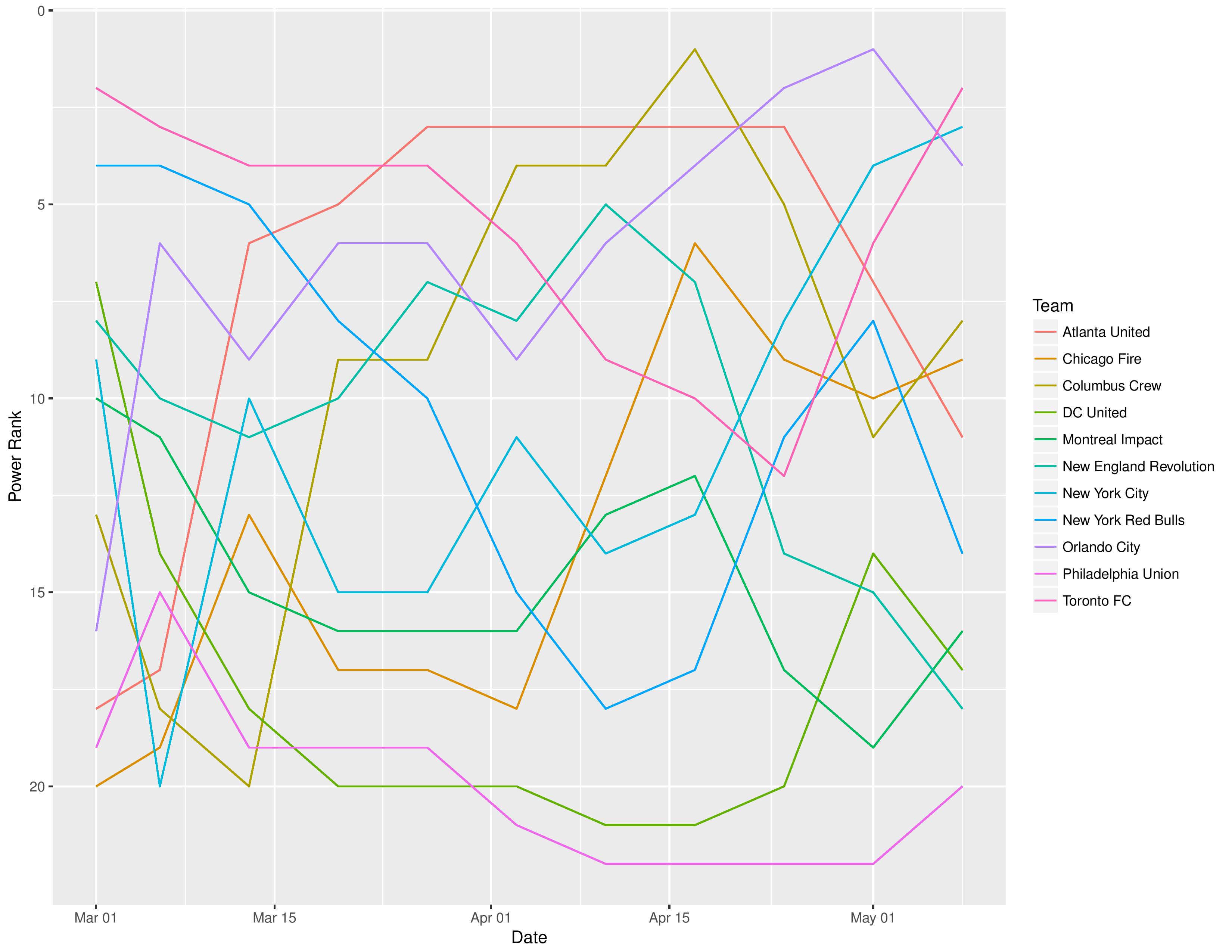
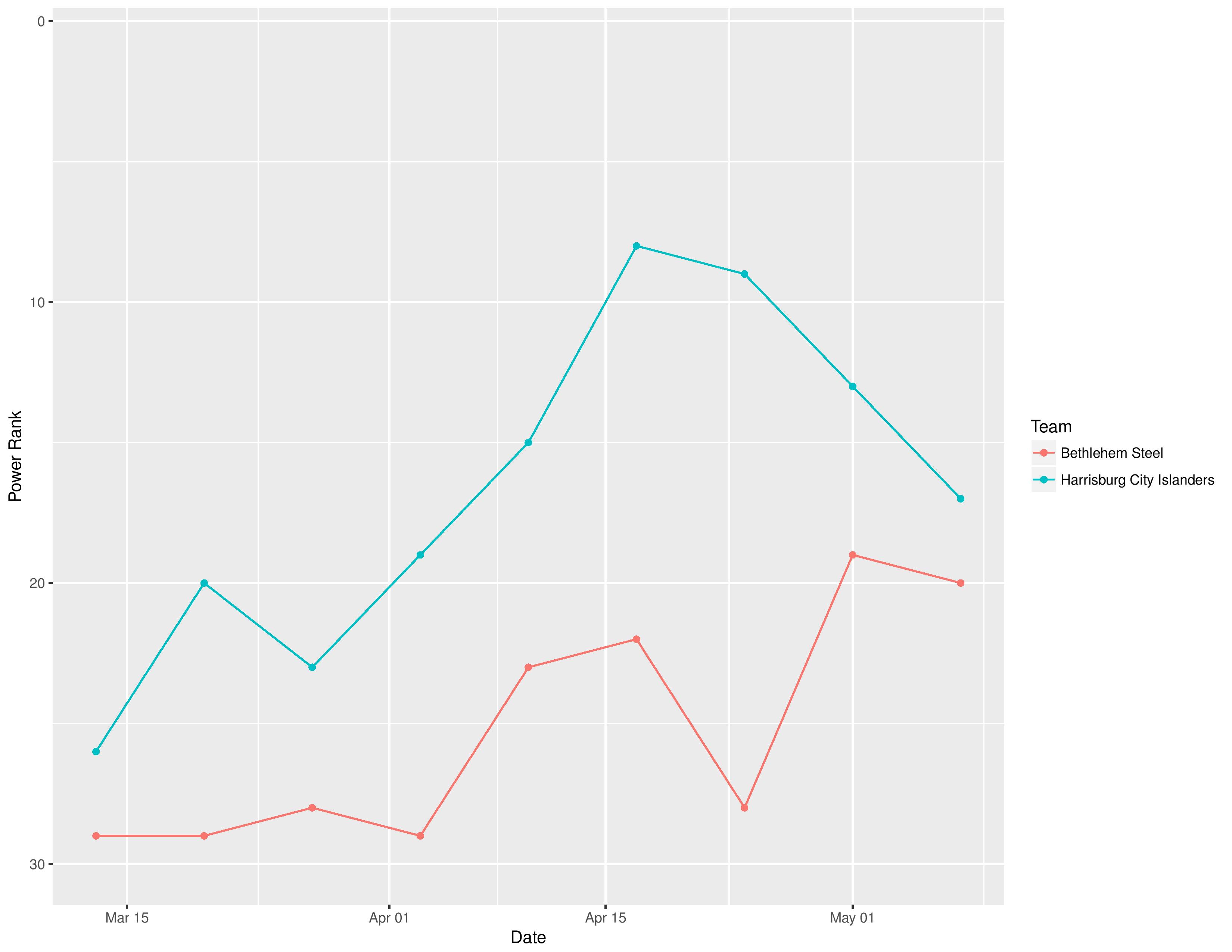


Comments